
-
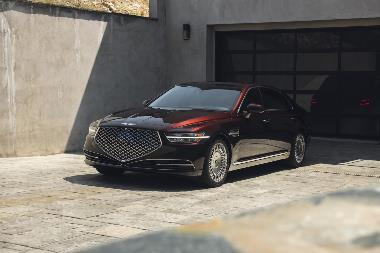
2020 Genesis G90: Restyled with Augmented Architecture, Safety and Tech
Tuesday, Oct 27, 2020
Hyundai entered the automotive industry as an “econocar” builder with the Cortina, in 1967, and after earning props for economy, ventured into the …
Show MoreHyundai entered the automotive industry as an “econocar” builder with the Cortina, in 1967, and after earning props for economy, ventured into the luxury market with Genesis, in 2009. Genesis became its own nameplate subsidiary as a spin-off, in 2017. The new luxury badge added to its ranks with G70, a 4-door compact executive sedan, and has since added the G80 mid-size and G90 full-size luxury sedans. G90 was based on the Hyundai Equus, but has become the flagship and face of Genesis, and according to William Lee, Executive Vice President and Global Head of the Genesis Brand, “The 2020 G90 is a flagship sedan for Genesis in the truest sense. Its launch begins a product offensive for the Genesis brand centered around emotive products with exceptional design.”
For 2020, the Genesis G90 has been restyled inside and out and has added tech and safety improvements. The changes have earned G90 accolades including being named the Most Satisfying Passenger Car and top Premium Luxury Car by leading research consultancy Auto Pacific in its annual Vehicle Satisfaction Awards. G90 also earned a TOP SAFETY PICK+ award from the Insurance Institute for Highway Safety, with a superior rating for vehicle-to-vehicle interactions, avoiding collisions in 12 and 25 mph track tests.
For 2020, with the exception of the roof and doors, every exterior body panel on the G90 has been replaced or changed. Employing the Genesis brand’s Athletic Elegance design language, G90’s signature Crest Grille is flanked by Quad Lamps up front, and in the rear, Quad Lamps wrap around from corner to corner. The license plate sits as low as possible, further accentuating a low and wide stance, and the elongated, horizontal side profile of G90 radiates vigor and dignity. Hyundai’s full-size luxury sedan measures 204.9 inches in length, 75.4 inches in width and 58.9 inches in height on a 124.4-inch wheelbase.
The interior design embodies the ethos of Horizontal Architecture, dominated by a harmonious, flow of horizontal surfaces including a parallel layout that includes air ventilation system, and audio controls that maximize simplicity and provide an intuitive user experience. The cabin shows a focus on premium materials and finishes that are befitting a flagship, including authentic chrome plating applied to switches and premium leather wrapping applied to the center console. Authentic, open-pore wood acts as a garnish, as does double stitching and piping throughout the cabin. Inside, G90 is roomy with 41.1 inches of front headroom, 46.3 inches of front legroom and a spacious 59.9 inches of front shoulder room. In the rear seats, G90 provides 38.0 inches of headroom, 37.8 inches of legroom and 57.9 inches of shoulder room.
Loaded and luxurious, G90 comes standard with Nappa leather seating surfaces and microfiber suede headliner; 22-way power driver seat with power lumbar, shoulder, and bolster adjustment; heated and ventilated front seats; Lexicon® 17-speaker audio system with Quantum Logic® Surround; Wireless charging pad and Genesis Connected Services.
From a safety perspective, the 2020 G90 is committed to passenger security and comfort. Advanced driver-assistance systems add a level of assuredness to the already refined driving experience. In addition to Genesis brandwide ADAS technology, the following new systems debut on the 2020 G90: Lane Following Assist expands the reach of lane-keep and lane-departure assists, to help stay centered in a lane and provide steering assistance; Rear Cross-traffic Collision-Avoidance Assist uses rear side radar to help detect and prevent impact with obstacles; Forward Collision-Avoidance Assist can now help detect bicycles and vehicles in front of the vehicle; Safe Exit Assist may alert a driver and passengers with alerts when an object is approaching an opening door; and Highway Driving Assist helps the driver to maintain the center of a lane on marked interstate highways, while keeping a safe distance from a vehicle in front.
Offered in two trim configurations based on engine type, you can either get the 3.3T Premium with the 365-hp/376-lb-ft 3.3-liter turbocharged V-6 engine or the 5.0 Ultimate with the 420-hp/383-lb-ft 5.0-liter V-8 engine. Both engines are coupled with an 8-speed automatic transmission and come in either rear-wheel-drive or all-wheel-drive with Genesis Adaptive Control Suspension with Electronic Damping Control. The smaller engine is rated at 17mpg/city and 25mpg/highway, and the 5.0-liter is EPA rated at 16/city and 24/highway. My 3.3 averaged 22.7mpg in mixed-use driving tests.
My test 3.3 turbo surprised at the track and pampered on the highway. In track tests, the luxury full-size polished off a zero-to-60mph sprint in 5.4 seconds during a hand-timed 13.9-second quarter-mile. In town, G90 was quiet, complaint and energetic and in the highway, my ride was strong, confident, stable and elegance in motion, with turbo lag nearly imperceptible. In quick maneuvers and over irregular terrain, G90 is smooth, precise and comfortable.
The 2020 Genesis G90 starts at $72,200 for the 3.3T in FWD and $74,700 in AWD, with the 5.0 in FWD starting at $75,700 and $78,200 in AWD. My test 3.3T AWD in Porto Red with a Black and Walnut interior, was loaded and added no packages or accessories. The only add-on was the $1025 Freight charge, to put the sticker at $75,725.
Mike Blake, former editor of KIT CAR magazine, joined Carlisle Events as senior automotive journalist in 2004. He's been a "car guy" since the 1960s and has been writing professionally for about 30 years.
-
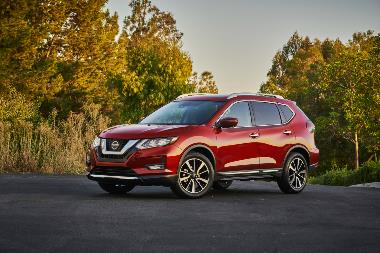
2020 Nissan Rogue: Compact Crossover Updates Safety Suite and Driver Assist Tech
Tuesday, Oct 20, 2020
Though slipping from 7th-best-selling vehicle in America in 2019, to No. 10 this year, and dropping one place to the 4th best-selling crossover in …
Show MoreThough slipping from 7th-best-selling vehicle in America in 2019, to No. 10 this year, and dropping one place to the 4th best-selling crossover in the U.S., Nissan’s Rogue compact CUV is still a popular buy in the final year of its second generation.
Launched in 2007 for the 2008 model year as Nissan’s entry-level compact sports-ute, Rogue will get a top-to-bottom redesign for 2021 that includes new styling, a new platform, cosmetics and an 11-hp boost in power. For 2020, Rogue discontinues its Hybrid variant; ProPILOT Assist is now standard on the SL trim and is optional on SV; and Rogue has also added the Nissan Safety Shield 360 suite of advanced safety equipment this year, a package that includes pedestrian detection, rear automatic braking, lane departure warnings, radar-based blind spot warnings, rear cross-traffic alerts and high beam assist. ProPILOT Assist is a hands-on driver assist system that combines Nissan's Intelligent Cruise Control and Steering Assist technologies, helps keep the vehicle centered in its lane, and maintains a preset distance from the vehicle ahead. Also for 2020, every Rogue SV gets standard amenities such as heated front seats, a power driver's seat, dual-zone climate control, a motion-activated liftgate, and rear automated emergency braking.
Rogue has built a following with its sporty and versatile demeanor and capabilities, and offers such standard safety amenities as Intelligent Lane Intervention, Automatic Emergency Braking, Pedestrian Detection and High Beam Assist, Rear Automatic Braking, a Rear Sonar System and Rear Door Alert across all grade levels.
Offered in three well-equipped grade levels -- S, SV and SL -- Rogue eliminated its third row of seating a few years back, but it fits the demand for an upscale compact crossover with dimensions of 184.5 inches in length; 72.4 inches in width and 68.5 inches in height (AWD) on a 106.5-inch wheelbase. Minimum ground clearance is 8.4 inches (AWD), and curbweight for the AWD in SL trim is 3670 lbs. Assembled in Smyrna, Tennessee, Rogue’s unibody construction utilizes corrosion-resistant and high-strength steel, enhanced by progressive, emotive styling. The Nissan signature "V-Motion" grille and headlights with LED signature Daytime Running Lights help augment Rogue's robust, dynamic presence. Halogen headlights with auto off function are standard, along with Intelligent Auto Headlights. Also available are LED headlights with auto on/off function, High Beam Assist and fog lights. In the rear are combination lamps with LED boomerang signature taillights.
Rogue’s refined interior presents a premium look and feel, blended with a D-shaped steering wheel and leather-booted sport-mode shifter, available heated steering wheel, memory for driver's seats and mirror, and remote engine start.
Thick rear roof pillars impede interior sightlines, but Rogue’s cabin is roomy for a smaller SUV with 41.6 inches of front headroom and 38.5 inches in row two. Interior legroom is comfortable in front at 43.0 inches and relatively roomy in row two at 37.9 inches. Shoulder room is 56.6 in front and 55.9 and in the rear. The cabin also affords nearly 40 cubic feet of luggage space, or 70 cubic feet when you fold the rear seats down. The cabin experience is quiet, intuitive and the seats are cushy, and you get all the infotainment we have come to expect.
Rogue continues to offer one standard power source, a transverse 2.5-liter inline-4-cylinder DOHC engine that provides 170 horsepower and 175 lb.-ft. of torque. Coupled with an Xtronic CVT® (Continuously Variable Transmission) with standard Sport Mode and Eco switches, Rogue is EPA rated at 26mpg/city, 33mpg/highway and 29mpg/overall in FWD and 25/32/27 in AWD. A week of mixed-use testing averaged 27.4mpg. Rogue is not a track star, and next year’s 11-hp gain will help its slow-but predictable acceleration. Uphill climbs are steady and passing at speed requires some strategy, but Rogue’s electric power-assisted rack-and-pinion steering was attentive enough for the niche, though with noticeable understeer. At the track, my test Rogue completed a 9.2-second hand-timed zero-to-60mpg dash, during a long 17.3-second quarter-mile.
The driving experience was smooth for the segment, with firm on-pavement engagement from independent strut front suspension, coil springs and an independent multi-link rear, though Rogue does not appear to be suited for severe off-road challenges.
Additional safety items include the Nissan Advanced Air Bag System with dual-stage supplemental front air bags with seat belt and occupant-classification sensors, driver and front-passenger seat-mounted side-impact supplemental air bags, and roof-mounted curtain supplemental air bags with rollover sensor for outboard occupant head protection for all rows.
Rogue’s three trim levels are each offered in front-wheel or Intelligent All-Wheel Drive, and the lineup bases from $25,490 to $33,190, which was the starting point for my top-trim 2020 Rogue SL in AWD – AWD is $1350 above FWD pricing. Scarlet Ember Tintcoat exterior paint added $395, splash guards added $170, chrome rear bumper protector added $165, clear door edge protectors were $375, and the SL Premium package added $1820 for a dual-panel Panoramic Moonroof and LED headlights. A moonroof wind deflector added $125, and Nissan’s 360-degree exterior Impact Sensor added $210. Shipping and Handling added $1095 for a sticker-as-tested of $37,545, but as the next-generation Rogue is out for 2021, there may be steep discounts available from your local dealer.
> Visit www.CarlisleEvents.com for more on the automotive hobby.
Mike Blake, former editor of KIT CAR magazine, joined Carlisle Events as senior automotive journalist in 2004. He's been a "car guy" since the 1960s and has been writing professionally for about 30 years. </I>
-
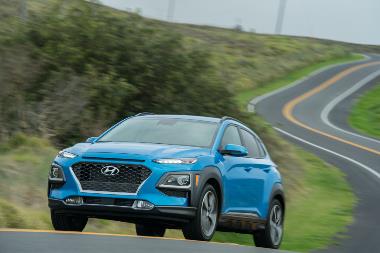
2020 Hyundai Kona: Sub-Compact CUV is Urban Smart, Sporty and Versatile
Tuesday, Oct 13, 2020
Blending a hip attitude, style, sportiness and luxury not generally expected from a sub-compact, Hyundai has targeted youthful “urban adventurers” wit …Blending a hip attitude, style, sportiness and luxury not generally expected from a sub-compact, Hyundai has targeted youthful “urban adventurers” with its sub-compact crossover utility vehicle, the 2020 Hyundai Kona.Show More
Introduced in 2018 with what Hyundai called “urban smart armor” exterior styling, Kona displays an aggressive demeanor complemented by a low and wide stance, and has packed the vehicle with niche-leading safety technology and advanced infotainment features in a compact footprint. Hyundai has also paid attention to performance and safety, offering two engines – one of which is a turbo system – and Kona has been awarded Top Safety Pick status from the IIHS (Insurance Institute for Highway Safety) and five stars from the federal government. The package tops off with a composure designed to exhibit confident handling in a variety of urban and adventure-oriented driving environments.
Since its launch in 2018, Kona gained standard driver assistance features last year, including forward collision warning, lane keep assist, and pedestrian detection and an all-electric Kona model. For 2020, Kona adds available adaptive cruise control and a new SEL Plus trim that is up-tweaked with more standard equipment. And on the Kona Limited trim, if you select Sunset Orange exterior paint, it comes with new Orange interior accents. Next year, the Night Edition trim joins the lineup
Slotting just below the larger Hyundai Tucson, the subcompact CUV is so well packed that my test Kona, in Ultimate trim, required only slight accessory add-ons, and an upgrade to AWD. Kona is outfitted with a standard floating touchscreen with Apple CarPlay™/Android Auto™ capability; and Hyundai Smart Sense with Forward Collision-Avoidance Assist with Pedestrian Detection, Driver Attention Warning, Blind-Spot Collision Warning, Lane Keeping Assist and Rear Cross-Traffic Collision Warning.
My test Kona Ultimate (top-of-the-line) trim came standard with a Heads-up Display, an 8-inch LCD touchscreen display with navigation, High Beam Assist
Parking distance warning, Rain-sensing wipers, HomeLink® and compass, Infinity® premium audio with 8 speakers including subwoofer, and external amplifier, a 4.2-inch color Multi-Information Display, Blue Link® Connected Car Services, Blue Link® connectivity and guidance packages, and wireless device charging.
Kona’s exterior is designed to exude adventure, power and elegance for the niche, while showing a willingness to take on soft-road activities. Kona plays to Hyundai’s family identity with a cascading grille, featuring a sporty mesh pattern, flanked by flared, wing-like fenders that dominate the front visage.
The sub-compact Kona measures 164.0 inches long, 70.9 inches wide and 61.0 inches high on a 102.4-inch wheelbase, providing a forgiving minimum ground clearance of 6.7 inches. The lightest Konas weigh in with a curb-eight of 2890 pounds and the heaviest with the turbo engine can reach 3276 pounds.
The distinctive features of the exterior continue inside with a strong horizontal character line creating a wide and spacious feel. The sleek and simple layout interior incorporates advanced infotainment features and a standard floating seven-inch touchscreen. HVAC (heating, ventilation and air conditioning) controls are surrounded by soft, fluid details that contribute to a sensuous experience and enhance the comfort-focused environment.
The cabin shows average-but-not spacious room for the niche, with front headroom of 38.0 inches (with sunroof and 39.6 without it) and rear headroom of 37.8 inches. Legroom is comfortable up front at 41.5 inches and tight as expected in back at 34.6 inches. Shoulder room is generous at 55.5 inches in row one, and 54.5 in row two.
Kona targets efficiency with its powertrains and offers a choice of two gasoline engines. On the SE, SEL and SEL Plus trims a 2.0-liter 4-cylinder Atkinson engine is standard, and produces 147 horsepower and 132 lb.-ft. of torque, mated to a six-speed automatic transmission. Limited and Ultimate trims offer the Gamma 1.6-liter 4-cylinder direct-injected, turbocharged engine generating 175 HP and 195 lb.-ft. of torque. The turbo engine is coupled to a seven-speed EcoShift® dual-clutch manual transmission.
The 2.0-liter engine is rated at 27mpg in city driving and 33mpg on the highway for FWD and 25/city, 30/highway for AWD; and the 1.6 turbo that powered my test ride was rated at 28/city and 32/highway for FWD and 26/city, 29/highway for AWD. I averaged 27.2mpg during a week of mixed-use runs. Acceleration is predictable and confident, with hill ascends and passing achieved easily. On the track, a steady 7.7-second zero-to-60mph dash and 16.1-second quarter-mile were accomplished.
The 2020 Hyundai Kona is offered in five trims (SE, SEL, SEL Plus, Limited and Ultimate). The SE starts at $20,300 with the 2.0-liter engine and 6-speed automatic transmission in FWD, and ranges to $27,950 for the Ultimate trim I tested with the 1.6-liter turbo and 7-speed EcoShift Dial Clutch transmission in AWD.
In Surf Blue exterior paint and a Gray interior, my Ultimate tweaked up with AWD for $1400. The Ultimate trim was so well-packed with standard equipment that only all-weather carpeted floor mats were added for $165 and mudguards were installed for $120. With an $1175 Freight charge added, my 2020 Hyundai Kona Ultimate stickered at $30,810 for the top-of-the line and seemed to be well in-line with the luxury and quality that were included in the package. You can also get into a lesser-scale Kona for $8,000 less, and Retail Cash Bonuses of up to $2500 may be available from your local dealer, with zero-percent financing options also offered.
> Visit www.CarlisleEvents.com for more on the automotive hobby.
Mike Blake, former editor of KIT CAR magazine, joined Carlisle Events as senior automotive journalist in 2004. He's been a "car guy" since the 1960s and has been writing professionally for about 30 years. </I>
-
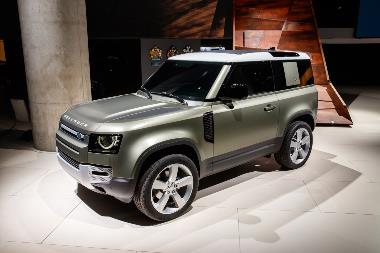
2020 Land Rover Defender: Luxury Off-Roader Builds on History and Built for the Future
Tuesday, Oct 6, 2020
First launched by the Rover Co. in 1948, Land Rover has earned a 72-year reputation for delivering tough, durable, go-anywhere, 4-wheel-drive utili …
Show MoreFirst launched by the Rover Co. in 1948, Land Rover has earned a 72-year reputation for delivering tough, durable, go-anywhere, 4-wheel-drive utility vehicles without sparing comfort or tech. Now known as Jaguar Land Rover Automotive PLC, and owned by parent Tata Motors of India, Land Rover continues to produce luxurious, safe, sturdy, high-tech and high-ticket off-roaders.
That tradition takes another step with the all-new Land Rover Defender, bringing back the badge (originally marketed from 1983-2016) with a new body structure, all-new technologies and proven hardware. Defender is a luxury four-wheel drive off-road SUV that is rugged, upmarket and re-imagined for the 21st century.
Playing on its iconic silhouette and shape, Defender is newly engineered for increased all-terrain capability and toughness. With a rugged modular interior providing comfort, capability and connectivity tech, Defender attends to its niche while remaining Land Rover luxurious and amenity packed. My test Defender 110 was outfitted with All Wheel Drive, Electronic Air Suspension, 8-speed Automatic Transmission, Auto-dimming interior rear view mirror, Garage Door Opener (HomeLink®), Wireless Device Charging, Keyless Entry, Connected Navigation Pro, 10-inch Touchscreen, Hill Launch Assist, Electric Power Assisted Steering, Dynamic Stability Control, Low Traction Launch, Electronic Traction Control, Roll Stability Control, Cornering Brake Control, Hill Descent Control and much more.
Defender’s rugged architecture employs minimal front and rear overhangs, with a purposeful upright stance and Alpine light windows in the roof, while retaining its iconic side-hinged rear tailgate and externally mounted spare wheel. That ruggedness is embodied in a package that measures 77.4 inches long, 78.6 inches high and 79.1 inches high on a 119.0-inch wheelbase, with a front overhang of 33.3 inches. Curb weight runs from 3815 to 4940 for the 110 model I tested, and some trims beef up to as much as 5165 lbs with the larger engine.
The Defender interior is an upscale, capable, comfortable, intuitive environment. Cabin features include, leather gearshift and steering wheel, carpet mats, two-zone Climate Control, cargo cover, footwell lights, rear reading lights, 40:20:40 folding rear seats, 8-way semi-powered front seats, Ebony fabric seats with Ebony/Ebony interior and such Driver Assistance tech advances as Blind Spot Assist, 3D Surround Camera
Cruise Control and Speed Limiter, Driver Condition Monitor, Lane Keep Assist, 360⁰ Parking Aid, Traffic Sign Recognition, Adaptive Speed Limiter and Wade Sensing.
With 5/6 seating or 5-plus-2 seating, Defender supplies 40.6 inches of front row headroom, 40.4 in row two and 40.7 in row three. Legroom is 39.1 inches in front, 39.1 in row two and only 20.5 in the third row, while shoulder room comes in at a spacious 60.8, 59.2 and 48.3.
U.S. customers can choose between a 2.0-liter turbocharged four-cylinder engine, badged P300, and a 3.0-liter six-cylinder Mild-Hybrid Electric Vehicle powertrain, badged P400. The P300 powertrain, which produces 296hp and 295 lb-ft of torque, uses an advanced twin-scroll turbocharger for smooth performance and efficient power delivery, The P400 inline-six MHEV powertrain harvests energy normally lost during deceleration and redeploys it to optimize performance to provide 395hp and 406-lb ft of torque. Both engines are paired with a smooth and responsive eight-speed ZF® automatic transmission and twin-speed transfer box, to deliver a set of low-range ratios essential for towing or off-road driving when more control is required.
In tests, my 2.0-liter, estimated at 18mpg/city and 21mpg/highway, averaged 19.3mpg, and at the track, we accelerated from zero to 60mph in 8 seconds-flat (hand-timed) during a 16.3-second quarter-mile. The sturdy short, long arms (SLA) double wishbone front suspension with an integral link rear was comforting and supple, and the Electronic Power Assisted Rack and Pinion Steering was All-Terrain attentive and in-town attentive, though loose at high speed.
The 2020 Land Rover Defender starts at $49,900 for the Standard P300 110 model (296-hp), moves up to $62,250 for the P400 with 395-hp and tops out at $80,900 plus destination and delivery charges for the 110X trim.
My 2020 Defender 110S (one step up from the base model) with the base 296-hp P300 powertrain, started at $53,350 and tweaked up from Standard with 19-inch 6-spoke, Gloss Silver Finish wheels, auto high beam assist lights, Ebony Grained leather and Robust Woven Textile seat facings with Ebony interior, interactive driver display sound system and much more. Pangea Green exterior paint added $710. The $4800 Explorer Pack added front and rear classic mudflaps, matte black hood decal, wheel arch protection, raised air intake, Expedition roof rack, exterior side-mounted gear carrier and spare wheel cover. Off-road and towing packs are extra, but my ride uptweaked for comfort and convenience, adding a Meridian™ Sound System, Premium cabin lighting and front console refrigerator for $895, the Cold Climate Pack (heated windshield, washer jets, power wash and steering wheel) for $700, and Three-Zone Climate Control with Rear Cooling Assist for $1075, also adding Cabin Air Ionization ($100) and Air Quality Sensor ($75). SiriusXM Radio ($300) and WiFi Enabling with Data Plan ($360) were selected and The Driver Assist Pack was also added, with Clear Exit Monitor, Adaptive Cruise Control and rear Traffic Monitor for $1275. Adding Delivery and Destination charges of $1350, my Defender 110S stickered at $64,990.
> Visit www.CarlisleEvents.com for more on the automotive hobby.
Mike Blake, former editor of KIT CAR magazine, joined Carlisle Events as senior automotive journalist in 2004. He's been a "car guy" since the 1960s and has been writing professionally for about 30 years. </I>
-
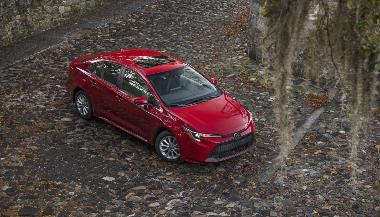
2020 Toyota Corolla: New Generation in Design, Power and Platform
Tuesday, Sep 29, 2020
Emphasizing a bold new look and its bumper-to-bumper, wheels-to-roof transformation, the all-new 12th-generation, 2020 Toyota Corolla se …
Show MoreEmphasizing a bold new look and its bumper-to-bumper, wheels-to-roof transformation, the all-new 12th-generation, 2020 Toyota Corolla sedan continues its legacy as an economical top-selling sedan. The best-selling nameplate in the world with 46 million units sold since its introduction in 1966, Corolla is currently the ninth top-selling vehicle and third best-selling sedan in America. The new-generation Corolla follows last year’s Hatchback launch with a 52mpg-Corolla Hybrid and a trendy new dynamic look for the sedan with Toyota's New Global Architecture (TNGA) platform for improved stability, agility and comfort. The TNGA platform is new to the sedan and imparts increased rigidity, and the rear suspension has beefed up with a new, more sophisticated multilink system.
Also new for 2020 are Toyota Safety Sense 2.0 (standard), a new 169-horsepower, TNGA 2.0-liter Dynamic Force Engine – available in addition to the standard 1.8-liter powerplant, available Dynamic-Shift CVT or six-speed manual transmission, standard Apple CarPlay, Amazon Alexa compatibility and Wi-Fi Connect. My test Corolla SE came with the larger 2.0-liter engine, normal and sport driving modes, front-wheel-drive, 18-inch alloy wheels, Dark Gray Metallic Sport Side Rocker panels and color-keyed rear spoiler, sport mesh Dark Gray Metallic front grille with LED accent lighting, 8-inch touchscreen, and sporty interior coolness with a center stack screen providing access to vehicle settings, audio controls, navigation, and audio multimedia.
From every angle, the new Corolla sedan looks lower and leaner, tauter and tighter. Powerful fender flares and generously curved fender top surfaces accent its sculpted, athletic demeanor. It’s not the econobox your parents drove in the ‘60s. The compact Corolla is shorter, wider and lower in this generation for increased stability, shortening length by 0.8 inches to 182.3 inches; gaining 0.2 inches in width to 70.1 and losing 0.8 inches in height to 56.5 inches, on the same 106.3-inch wheelbase, though the platform is brand new -- Toyota's New Global Architecture. Curbweight goes from 2910 lbs. to 3150 lbs. depending on trims and accessories, putting on from 50 to 100 lbs. Ground clearance is lower by more than an inch, at 5.1 inches.
Corolla has been known for its fuel economy and that continues this year. The 2020 Corolla offers two efficient engines, a 1.8-liter, 16-valve inline-four-cylinder engine and a direct-injection 2.0-liter Dynamic Force inline-4. The base 1.8-liter unit gains 7hp and delivers 139 horses with the same 126 lb-ft of torque as did the last generation. The 2.0-liter is good for 169hp and 151 lb-ft., where the top-tuned engine of Gen-11 put out 140hp. In keeping with the Corolla mission, Corolla’s 1.8-liter is EPA rated at 30mpg/city, 38mpg/highway and 33mpg/overall. The 2.0 is rated at 31/38/34, and one setup can get you 40mpg on the highway.
The front-wheel-drive system may not be a track star, but it did show energy and finished a zero-to-60mph sprint in 7.9 seconds (hand-timed), during a 16.2-second hand-timed quarter-mile. Showing the economical fuel consumption that first built its following, my test ride averaged 30.2mpg in mixed-use driving.
Corolla’s Independent MacPherson strut front suspension with stabilizer bar and rear multi-link with stabilizer bar smoothed out road imperfections better than old econocars did, but it isn’t quite up to lavish ride status.
With seating for five, Corolla provides the same 38.3 inches of front headroom as last year, and 37.1 inches in row two. However, legroom loses a bit from last year at 42.0 inches in the first row and a tighter 34.8 inches in the second seats. Shoulder room is comfortable at 54.0 up front and cozier at 51.7 in row two. The cabin is packed with infotainment, climate features, cool upscale lighting and instrumentation, and various informational displays that are driver-friendly. The cabin is quieter than ever thanks to the new structure, drivetrain improvements and insulation. Cabin environment is improved with Corolla sedan’s fully redesigned air conditioning system that employs smarter climate control, as its innovative twin-layer recirculation/fresh air induction unit reduces glass fogging while promoting recirculation of warm cabin air in lower areas.
From a safety perspective, the 2020 Corolla sedan features eight standard airbags and Toyota’s Star Safety System, which includes Enhanced Vehicle Stability Control, Traction Control, Electronic Brake-force Distribution, Brake Assist, Anti-lock Braking System, and Smart Stop Technology, and all Corolla sedan models come equipped with a standard backup camera. Significantly, all 2020 Toyota Corolla sedan models are equipped standard with Toyota Safety Sense 2.0, an advanced suite of integrated active and pre-collision safety features.
Starting at under $20,000 for the base 2020 Toyota Corolla L ($19,600), Corolla comes in seven trims, including the Hybrid LE, which bases at $23,100. The top XSE trim starts at $25,550, and my test SE trim, second in the lineup, starts at $22,050. Barcelona Red exterior paint was mated to a Light Gray/Moonstone fabric interior and we added one of three SE Premium Packages available, the middle option, for $2315 that included a ton of Siri, Alexa, Apple, Verizon WiFi and remote connect capabilities, GPS, Blindspot warning, remote keyless entry, color-keyed heated outside mirrors, and much more. Bodyside moldings added $209, Door Edge Guards added $125, Mudguards added $129, and Delivery, Processing and Handling fees of $995 put the sticker-as-tested at $25,823.
Mike Blake, former editor of KIT CAR magazine, joined Carlisle Events as senior automotive journalist in 2004. He's been a "car guy" since the 1960s and has been writing professionally for about 30 years.
-
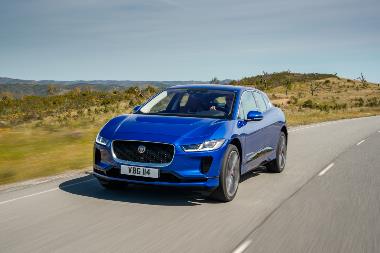
2020 Jaguar I-PACE: Big Cat 394-HP all-Electric Crossover Adds Battery-Charging Alerts
Tuesday, Sep 22, 2020
Jaguar leapt into the electric car niche last year with I-PACE, the company’s first all-electric vehicle, and an EV SUV/crossover as well. This fun-to …Jaguar leapt into the electric car niche last year with I-PACE, the company’s first all-electric vehicle, and an EV SUV/crossover as well. This fun-to-drive sports-ute had non-traditional electric car sportiness, luxury amenities inside and out, and 394-horsepower performance. Jaguar’s first full battery-electric vehicle has an EPA estimated range of up to 234 miles from a single full charge of its 90kWh lithium-ion battery, and a new software upgrade developed from its eTROPHY racing analysis can improve its real-world range to up to 246 miles.Show More
The software upgrade is part of minor augmentation for 2020, as Jaguar chose to stand pat for the most part, in the second year of I-PACE’s initial run. Also new for 2020 are changes to the torque distribution between the front and rear motors in AWD to deliver greater efficiency when driving in ECO mode. Jaguar has also made refinements to thermal management control to make greater use of the active radiator vane system, closing the vanes more frequently to enhance aerodynamic performance more of the time. Additionally for 2020, changes to the predictive range calculation algorithm delivers a more accurate and consistent estimate of vehicle range, while being more reflective of an individual’s driving style. In addition, regenerative braking now harvests energy more efficiently when the battery is in a high state of charge, and the amount of energy recovery improves at lower driving speeds to maximize efficiency and range.
The all-electric SUV has also uptweaked with a complimentary 4G data plan, a 360-degree camera system, wireless charging, and an onboard app that displays where the nearest charging stations are and how long it should take to restore the battery. Regarding charging, I-PACE’s new 11.0-kW onboard charger has improved charging, and can complete a full recharge from a dead battery in 8.6 hours – last year’s system took 12.6 hours to recharge from zero.
The stylish and sporty I-PACE looks like a luxury sedan up front and your only get the SUV demeanor when looking at it from the side or rear. Definitely not a boxy sports-ute, I-PACE shows off a fixed panoramic roof, Gloss Black door claddings and valance, Gloss Black grille with Satin Chrome surround, tailgate spoiler, rain-sensing windshield wipers, heated rear window with timer, 3-flash lane change indicators, LED tail lights, rear fog lights, Automatic Headlight Leveling System and “Follow me home” lighting.
Weighing in at a robust 4784 lbs (curbweight), the sporty I-PACE fits its midsize crossover niche with dimensions of 184.3 inches long, 61.3 inches high and 79.2 inches wide on a 117.7-inch wheelbase. Ground clearance is 5.6 inches at maximum load.
I-PACE melds Jaguar’s iconic sleekness outside and interior luxury with Big Cat muscle -- 394 horsepower and 512 lb-ft of torque while attaining an EPA-rated driving range of up to 246 miles on a full charge. When drivers do not have 8 hours for a full charge, rapid public charging from 0-80 percent can be accomplished in less than 40-minutes, with a 15-minute charge delivering a 60-mile range. Full charges can be undertaken at public sites or at home with an AC wall box (7kW).
Smooth acceleration, track-worthy handling and dynamics are part of Jaguar’s sportscar DNA, and I-PACE delivers with effortless passing at speed, easy conquering of uphill grades and auto-cross dominating steering. From a standing start, my test I-PACE accelerated to a 4.5-second hand-timed zero-to-60mpg sprint and finished off a quarter-mile in a sports sedanlike 13.1 seconds (hand-timed).
The well-appointed cabin speaks of Jaguar lavishness, from its high-quality materials, three information displays and touch-capacitive controls, to its fit, finish and infotainment. The center console’s floating-bridge design is bold, cockpit-like and well above the traditional SUV insipidness. I-PACE seats five, though front headroom is a bit tight at 39.9 inches with only 38.1 inches in row two. Legroom is relaxing in row one at 40.9, but snug at 35 inches in row two, and shoulder room is 57.6 in front and 54.6 inches in the rear seats.
As is characteristic with an electric vehicle, the cabin is quiet, though you do get some tire and road noise on the highway, and the touchscreen takes a beat to respond. Sightlines are good up front and on the sides, but the small rear window and rear shoulders create a blind zone.
The 2020 Jaguar I-PACE starts at $69,850 for the Base model (I-PACE S) and tops off at the HSE trim at $80,900. My I-PACE in SE trim based at $76,250 (about $400 higher than last year). Caesium Blue exterior paint added $710 and the trim came with 20-inch 6-spoke wheels, Ebony grained-leather sport seats with an Ebony interior, 10-way electric memory front seats, soft-grain leather sport steering wheel and 11-speaker/12-amp channel Meridian sound system. A high-res head-up information display added $970; the Driver Assist Pack with 360-degree surround camera and adaptive cruise control added $1300; the Cold Weather Pack with heated windshield, heated washer jets and heated steering wheel added $530; front fog lights were $100; a reduced section alloy spare wheel was $150; cabin air ionization added $100; power gesture tailgate added $100 and delivery and destination charges added $1150 for a sticker-as-tested of $81,360.
> Visit www.CarlisleEvents.com for more on the automotive hobby.
Mike Blake, former editor of KIT CAR magazine, joined Carlisle Events as senior automotive journalist in 2004. He's been a "car guy" since the 1960s and has been writing professionally for about 30 years. </I>
-
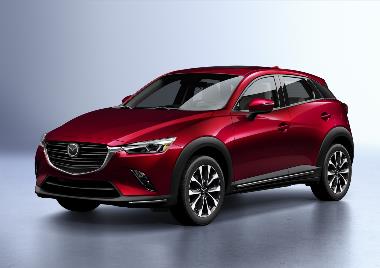
2020 Mazda CX-3: Sporty and Refined Subcompact Crossover is Stylish and Fun to Drive
Tuesday, Sep 15, 2020
Mazda added the CX-3 subcompact to its crossover lineup for model-year 2016, replacing the similar Mazda2 subcompact. In a world of large and often …
Show MoreMazda added the CX-3 subcompact to its crossover lineup for model-year 2016, replacing the similar Mazda2 subcompact. In a world of large and often-expensive SUVs, Mazda’s CX-3 represents a more-economic, fuel-conscious downsize that can take on urban landscapes with crowded traffic and parking challenges, camping and outdoor ventures, long highway cruises and family excursions, looking good and sporty while handling with good manners along the way.
Ready for adventure, and developed with Mazda’s striking design philosophy, athletic driving dynamics and straightforward driving position, CX-3 offers an engaging package for urbanites who don’t settle for the conventional. This unconventional presentation has earned the 2020 Mazda CX-3 subcompact crossover the attention of industry experts, and the fun-to-drive mini-ute has been awarded the title as "Best Subcompact SUV of 2020” by Kelley Blue Book’s KBB.Com while gaining a 2020 IIHS Top Safety Pick+ ranking from the Insurance Institute for Highway Safety.
New for 2020, Mazda has eliminated the Touring and Grand Touring trims that were available last year, reducing the line-up to only the Sport trim. A treasure of advanced safety features have been added as have convenience items including standard Android Audio and Apple CarPlay. Additionally, i-Activesense driver assistance features are now standard. The standard suite of i-Activesense safety amenities includes Mazda Radar Cruise Control with stop-and-go function, Advanced Smart City Brake Support with Pedestrian Detection, Smart Brake Support with Collision Warning, Lane Departure Warning, High Beam Control, Blind Spot Monitoring with Rear Cross-Traffic Alert and a rearview camera.
The 2020 Mazda CX-3 Sport is packed with more than safety. CX-3 is augmented so fully that enhancement packages offered are non-existent. Standard interior installs include cloth door trim with Black armrests, Black center console knee pads, power windows with driver's one-touch down/up feature, power door locks with 2-stage unlocking, push button start, rear window defogger with timer, remote fuel door release, remote keyless illuminated entry system with “answer back” feature, tilt and telescopic steering column, 7-inch full-color touch screen display, Bluetooth® hands-free phone and audio capability, AM/FM audio system with Automatic Level Control and six speakers, MAZDA CONNECT™ Infotainment System, Active Driving Display, Ambient temperature and digital clock, 6-way manual driver's seat, steering wheel-mounted audio and cruise controls and a trip computer.
CX-3’s athletic architecture features smooth, flowing angles that designers market as “creating a sense of motion.” CX-3 Sport now features all LED exterior lighting as standard, including adaptive headlights, taillights and daytime running lights. To add function to form, the LED headlights have automatic on/off and automatic leveling capabilities. Body-colored power side mirrors with integrated turn signals complement body-colored door handles, and rain-sensing windshield wipers, complement the rear window wiper. To bring the entire package together, the CX-3 is styled with 16-inch aluminum alloy wheels, a roof spoiler, shark fin antenna, dual stainless-steel exhaust outlets and an understated black front grille design that brings greater depth and distinction.
Mazda CX-3 is molded in subcompact dimensions on a 101.2-inch wheelbase, with a length of 168.3 inches, width of 69.6 inches and height of 60.7 combining for a minimum ground clearance of 6.1 inches. Curb weight is 2851 lbs. for FWD and 2994 lbs. for AWD configuration.
Inside, with seating for five, CX-3’s stylish cabin provides full instrumentation including tachometer and fuel level gauge, Black gauges with White lettering and Silver surround, 60/40 split fold-down rear seats and front and rear outboard seat headrests. The cabin affords front headroom of 38.4 inches, with 37.2 inches in row two; legroom is 41.4 inches up front and 35.0 inches for the rear seats, and shoulder room comes in at 53.5 and 50.4.
CX-3 powers up with a 16-valve, 4-cylinder SKYACTIV®-G1 2.0-liter DOHC engine that produces 148 horsepower and 146 lb-ft of torque. In FWD, the system is EPA-rated at 29mpg/city and 34mpg/highway, and in AWD, CX-3 gets 27/32. My week of tests in the AWD averaged 30.8mpg.
The mini-crossover’s electric power-assist rack-and-pinion steering was agile and attentive, with acceptable understeer and stability, and the suspension is set for a premium riding experience, though road feel is lessened in favor of smoothness.
The 148-hp power plant and quick-shifting Skyactiv-Drive six-speed automatic transmission with manual-shift mode and Sport mode accelerated smoothly and predictably, passing at speed with some strategy, and conquering uphill grades with patience. At the track, CX-3 is econo-speeded, with a zero-to-60mph sprint accomplished in 9.6 seconds, during a tedious 17.4-second hand-timed quarter-mile.
The 2020 Mazda CX-3 is available in one trim level, the Sport, starting at $20,640 in front-wheel-drive and $22,040 in all-wheel-drive. I prefer the stability and reliability of AWD and we started there. Soul Red Crustal Metallic exterior paint added $595 and was complemented by a Black cloth interior. No full option packages were available as the CX-3 Sport is loaded with standard items, but a frameless auto-dimming rearview mirror with Homelink® added $325, all-weather floormats added $125, and rear parking sensors added $500. Affixing the $1100 destination fee put the sticker of this 2020 Mazda CX-3 Sport as-tested at $24,185.
<I> Visit www.CarlisleEvents.com for more on the automotive hobby.
Mike Blake, former editor of KIT CAR magazine, joined Carlisle Events as senior automotive journalist in 2004. He's been a "car guy" since the 1960s and has been writing professionally for about 30 years. </I>
-
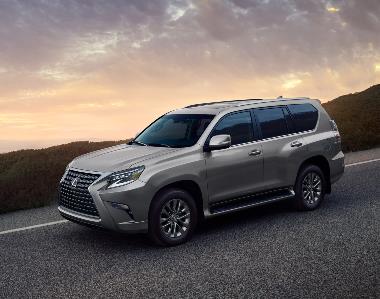
2020 Lexus GX: Dual-Purpose SUV is City Maneuverable and Long-Vacation Capable
Tuesday, Sep 8, 2020
The Lexus badge is most-often equated to luxury, but perhaps versatility and purpose can best describe the luxurious full-size three-row Lexus GX spor …The Lexus badge is most-often equated to luxury, but perhaps versatility and purpose can best describe the luxurious full-size three-row Lexus GX sport-utility vehicle. Introduced in 2002 as the third SUV in the Lexus line-up, the GX 470 was rebadged GX 460 with its second generation in 2009, and in the past 11 years has been badged as GX, GX 460 Premium and GX 460 Luxury, under the GX umbrella. The 2020 GX represents a very long run (11 years) for a generation, and with only cosmetic changes set for 2021, this year’s model sees cosmetic, tech and package changes.Show More
New for 2020 are a face lift that starts with a redesigned, more angular spindle grille, new triple-beam LED headlamps, and Atomic Silver joins the palette of exterior colors. Acoustic front side glass is standard on all models as are Amazon Alexa compatibility, and safety features as part of Safety System+. New interior trim options are available and an Off-Road package is also new, consisting of a 360-degree Panoramic View Monitor and Multi-Terrain Monitor with four Cameras, a transmission cooler, a fuel-tank protector and Lexus' own Crawl Control and Multi-Terrain Select. The Sport Design Package adds nuances including a lower grille surround, rear valence, side mirrors, matte black exhaust tip, scarlet tail lamps and 19-inch alloy wheels with a Gunmetal Metallic finish, and other available packages add Silver 18-inch wheels and Heated Wood-trimmed Steering Wheel.
But above all, the 2020 Lexus GX remains luxurious, and capable with a dual purpose: engineered for family, around town lavishness, maneuverability, and crafted with upscale detail, fit and function; while given attention toward long vacations that can require rugged multi-terrain, off-road aptitude and attitude.
The Lexus GX 460 I tested needed few additions, as it is loaded with standard features including 18-inch wheels, automatic LED headlights, daytime running lights, illuminated running boards, heated power-adjustable side mirrors with integrated turn signals, 10-way power-adjustable front seats and a power-adjustable tilt-and-telescoping steering column. The cabin is enhanced with keyless entry and ignition, dual-zone automatic air conditioning, faux-leather upholstery, auto-dimming rearview mirror and such safety items as blind-spot monitoring and lane-keeping assistance. Towing is aided with Trailer Sway Control, a function of the Vehicle Stability Control that enhances straight-line tracking.
Bold and aggressive with Euro-styled curves, creases and sculpting, Lexus GX is molded on a 109.8-inch wheelbase and is 192.1 inches long, 74.2 inches wide and 74.2 inches high, with a ground clearance of 8.1 inches. Curb weight is 5130 lbs for the base model and up to 5200 lbs for upper-level trims.
Exquisitely crafted and filled with intuitiveness, tech, infotainment, dual-zone climate control with interior filter, and safety, the, GX cabin affords 38.0 inches of front headroom, 40.4 inches in the middle and 35.2 inches in the rear. Legroom is 41.7 inches up front, 34.1 in the middle and a child-worthy 29.3 in the rear. Shoulder room is 55.4 inches up front, 57.3 in the middle and 54.5 in the back seats.
Available features include a wood and leather-trimmed heated steering wheel, crafted exclusively with hand-selected materials. The GX multimedia system offers a touchscreen with a customizable home screen that can display three sections simultaneously, and rear seat passengers can power their mobile devices thanks to two additional USB ports, among the GX compliment of four.
The 2020 Lexus GX offers one engine choice: a 4.6-liter DOHC 32-valve V-8 with Dual Hydraulic with intelligence that produces 301 horsepower and 329 lb-ft of torque. This 4-wheel-drive system is teamed with a six-speed automatic transmission and all-wheel drive. Lexus's Kinetic Dynamic Suspension System is standard, and this setup smooths out highway unevenness and serves well in non-extreme off-road challenges. Maneuverability is deft in town and responsive in curves and harsh steering tests, with acceptable body roll and top-wobble for the segment. The Engine speed sensing power-assisted rack and pinion with Variable Gear Ratio Steering was attentive with slight, predictable understeer, and excellent for off-road impediments, but not autocross quick.
In track tests, we were quicker than the manufacturer estimated, finishing off a zero-to-60mpg sprint in 7.4 seconds (hand-timed) during a 16.1-second quarter-mile.
Fuel economy was not economical, though we managed to exceed the EPA estimate of 15/19 mpg city/highway, as we averaged 19.4 mpg test trials on the interstate, around town and a few quick off-road excursions.
Lexus attends to safety with the standard Lexus Safety System+ suite of technologies that includes Pre-Collision System with Pedestrian Detection, Lane Departure Alert, Intelligent High Beams and High-Speed Dynamic Radar Cruise Control. There’s also a backup camera and 10 standard airbags.
Available in three trim levels, the base four-wheel-drive 2020 Lexus GX starts at $53,000; the GX 460 Premium starts at $55,790 and the top-level GX 460 Luxury trim starts at $64,265. My test 2020 GX 460 Premium added elevated style to the base model, with an interior trimmed in NuLuxe®, Gray Sapele wood accents, available second-row captain's chairs and a third zone of climate control. In Nebula Gray exterior paint and Ecru interior, a wood- and leather-trimmed steering wheel added $300, headlamp washers added $100, and handling and delivery charges added $1025, for a sticker-as-tested of $57,215.
<I> Visit www.CarlisleEvents.com for more on the automotive hobby.
Mike Blake, former editor of KIT CAR magazine, joined Carlisle Events as senior automotive journalist in 2004. He's been a "car guy" since the 1960s and has been writing professionally for about 30 years. </I>
-
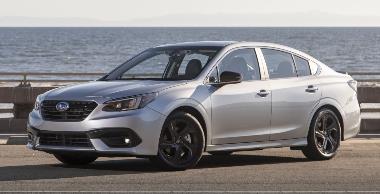
2020 Subaru Legacy: Redesigned with Added Sportiness, Power, Tech and Safety
Tuesday, Sep 1, 2020
Subaru launched the midsize Legacy badge in 1989, as a flagship that offered standard all-wheel-drive and a BOXER engine. Thirty years of successfu …
Show MoreSubaru launched the midsize Legacy badge in 1989, as a flagship that offered standard all-wheel-drive and a BOXER engine. Thirty years of successful sales later, Subaru of America introduced the all-new seventh-generation 2020 Legacy sedan – the most advanced Legacy in the model’s history. The 2020 Legacy presents with standard Subaru Symmetrical All-Wheel Drive and EyeSight® Driver Assist Technology, available tablet-style high-definition 11.6-inch SUBARU STARLINK™ multimedia screen, and DriverFocus™ Distraction Mitigation System. A 260-horsepower turbo engine powers up new XT models, and the redesigned sedan is equipped with new technology and safety features, and is based on a platform shared with Subaru’s high-rep Ascent and Forester.
The completely redesigned 2020 Subaru Legacy uptweaks with tech upgrades, turbo engine and new lane-centering add-on, and the platform that has been optimized for the midsize Legacy, boasting a structure that is 70-percent stiffer in both torsional and front-suspension rigidity and 100-percent stiffer in both front lateral flexural and rear subframe rigidity compared to the previous Legacy’s platform. Along with a strengthened suspension and lowered center of gravity, the Legacy’s improved body rigidity provides more responsive steering and handling, smoother and quieter ride, and heightened hazard avoidance in emergency situations. The 2020 Legacy comes with improved crash protection, as the new body absorbs over 40-percent more energy in front/side crashes than the previous model. When a crash is unavoidable, the Legacy protects with eight standard airbags, including a driver knee airbag.
In six trims, some with renewed sportiness, Legacy is still a family sedan, and is nearly 2 inches longer than Gen-Six, as other dimensions remain about the same. The 2020 Legacy is 15 to 50 pounds lighter than last year, and with the exception of 1.4 inches of greater rear legroom, interior accommodations are roughly the same as in 2019.
An aggressive stance and increased athleticism enhance Legacy’s exterior design, further augmented by its evolutionary grille shape, defined wheel arch, chrome accent at the rear pillars and squint-eye headlamps. The 5-passenger midsize sedan measures 190.6 inches long, 59.1 inches high and 72.4 inches wide on a 108.3-inch wheelbase, for a curb weight of 3499 lbs. for the base model and up to 3790 lbs. for uptweaked trims.
My Legacy Sport trim test ride was second up of the six trims, and boldly shows a performance-oriented exterior that features an exclusive rear bumper, front grille with high-gloss black bar, high-gloss black side mirrors, trunk lid spoiler and dark metallic 18-inch alloy wheels. Inside, the Sport comes with aluminum pedals as well as red stitching on the instrument panel, door trim, seats, shift lever boot and leather-wrapped steering wheel. The Sport cabin also upgrades with 10-way power adjustable driver's seat, analog instruments, Keyless Access with Push-Button Start and lots more.
For the first time since 2012, the Legacy lineup will feature a turbocharged engine. Standard on XT models, the 2.4-liter turbocharged BOXER engine delivers 260 horsepower and 277 lb-ft of torque, mated to a high-torque Lineartronic CVT with manual mode and steering wheel paddle control switches, and is rated at 24mpg/city and 32 mpg/highway. My Sport trim was a 2.5 model that powered up with a 2.5-liter DOHC Boxer engine that produces 182hp and 176 lb-ft of torque and is EPA rated at 27mpg/city and 35mpg/highway, though my tests yielded a lower average of 26.4mpg in mixed-use driving.
The turbo might launch a 0-60 mph sprint in an estimated 6.1 seconds, but my 2.5-liter BOXER sprinted in 7.9 seconds during a hand-timed 16.1-second quarter-mile. Slow and steady, the quick-ratio electric power-assisted rack and pinion steering was vague at high speed and in tight turns, but the suspension created a soft, gentle ride, limited body roll, and sightlines were unimpeded.
Subaru touts interior quietness -- 3 decibels quieter at highway speeds than Gen-Six – thanks to special door weather stripping and sound-insulating glass, and I did enjoy luxury-quiet in the cabin.
Inside, Legacy provides a cozy 39.4 inches of front headroom and 37.2 inches in row two – you lose two more inches up front with a sunroof. Legroom is 42.8 inches in row one and 39.5 inches in row two, and shoulder room comes in at 58.1 and 57.4.
Legacy safety is attended to well and the midsize earned a Top Safety Pick+ rating from the Insurance Institute for Highway Safety. Along with items mentioned above, Legacy safety technology includes standard Advanced Adaptive Cruise Control with Lane Centering. Additionally, Legacy has gained a rep for being long-lasting and dependable, with 96 percent of Legacy vehicles sold in the last 10 years still on the road today.
The 2020 Subaru Legacy starts at $22,745 for the base trim. The Legacy Premium trim starts at $24,995, the Legacy Sport starts at $26,945, the Legacy Limited starts at $29,745, the Legacy Limited XT with the 2.4 turbo starts at $34,195 and the Legacy Touring XT with the turbo starts at $35,895. My test Legacy Sport in Crystal White Pearl paint, added Blind Spot Detection with power moonroof, 11.6-inch touchscreen navigation and more for $2245, and moonroof air deflector added $99.99, Destination charges of $900 put the sticker-as-tested at $30,189.
> Visit www.CarlisleEvents.com for more on the automotive hobby.
Mike Blake, former editor of KIT CAR magazine, joined Carlisle Events as senior automotive journalist in 2004. He's been a "car guy" since the 1960s and has been writing professionally for about 30 years. </I>
-
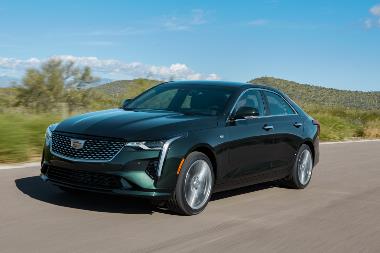
2020 Cadillac CT4: New Entry-Luxury Sedan Aimed at Younger Buyers
Tuesday, Aug 25, 2020
Cadillac dropped its compact executive 4-door (later, a two-door) sedan, ATS, after a seven-year run, in 2019. Taking over the compact luxury sports s …Cadillac dropped its compact executive 4-door (later, a two-door) sedan, ATS, after a seven-year run, in 2019. Taking over the compact luxury sports sedan spot in the Cadillac line-up is the all-new 2020 Cadillac CT4, which is marketed as an entry-luxury sports sedan to attract first-time luxury, and younger buyers to the Cadillac brand.Show More
Sharing its platform with the abandoned ATS, CT4 is its own design and personality, with two turbo engine choices, and up to 325 horsepower. Though that is quite a drop from ATS’s uppermost engine power choice of 464hp, CT4’s handling, performance and style are enough for it to earn its own rep, accolades and following.
CT4 enters the Cadillac sedan portfolio set to appeal to a new generation of sport-luxury customers through an immersive new social media campaign. Featuring a luxury-sports design, and bold 11-color color-and-trim palette, customers can customize to fit their personalities. Additionally, CT4’s sporty performance, RWD and AWD configurations, and high-technologies including Super Cruise -- the world’s first true hands-free driver assistance feature for more than 200,000 miles of compatible highways in the U.S. and Canada -- inject new ideas and function to the Cadillac line-up.
Available in four trims with specific cosmetic and power differences, CT4 offers special wheel options and is luxury loaded with leather-appointed seating, Automatic Emergency Braking, Forward Collision Alert, Front Pedestrian Braking, Safety Alert Seat and LED Reflective Windshield Collision Alert. Additionally, CT4 is outfitted with Cadillac User experience with Personalization and embedded Navigation, 8-inch-diagonal high-definition color-touchscreen driver information display, dual-microphone, Cloud3-based natural voice recognition, dual-display driver information center, 15-watt wireless charging and lots more.
The CT4’s sleek profile leverages the natural, long dash-to-front-axle proportional advantage of its rear-drive platform and, along with its wide stance, expresses presence, confidence and performance. Bright exterior accents, along with unique grilles (with premium hot foil-stampings on the grille elements) and fascias, distinguish the CT4 Luxury and Premium Luxury models. The Sport and V-Series models are differentiated by darker accents and performance-inspired details, including unique grilles, fascias, rocker extensions, rear spoiler and exclusive performance design wheels.
The sporty entry-luxury sedan measures 187.2 inches long, 71.5 inches wide and 56 inches high on a 109.3-inch wheelbase, weighing in at 3461 lbs. for the Luxury series in RWD, and 3616 for the V-Series in RWD.
CT4’s driver-focused and connected cabin is ergonomically optimized with intuitive controls to enhance driver confidence with a high-tech sense of tactility. Additionally, sophisticated use of metal accents throughout enhances the décor and technology-driven ambiance.
Inside, CT4 provides a surprisingly tight 38.3 inches of front headroom with only 36.5 inches for row two, 42.4 inches of front legroom with only 33.4 inches for back seaters and 55.2 inches of front shoulder room with 53.9 inches for row two.
Turbo power CT4 delivers power through two engine options. A 2.0-liter Twin-Scroll Turbocharged I-4 DOHC with Active Fuel Management, direct injection and auto stop/start, is mated to an eight-speed automatic with Electronic Precision Shift to provide 237hp and 259 lb-ft of torque. Option two is a 2.7-liter Dual-Volute Turbocharged I-4 DOHC with Active Fuel Management, direct injection and auto. stop/start. The CT4's dual-volute turbo (a volute is a spiral-shaped object) and ten-speed automatic transmission with Electronic Precision Shift provides 310hp and 327 lb-ft, and is augmented for the CT4-V Series to supply 350hp and 380 lb-ft.
My 310-hp 2.7-liter plant was rated at 23mpg/city and 32mpg/highway with 4WD, and I averaged 25.5mpg during my heavy-footed tests. Around town, the ride was smooth, maneuverable and attentive in turns and acceleration. On the highway, passing was effortless, road inadequacies were leveled out, and on curves and the autocross, CT4 was nimble, responsive and powerful. In track tests, my test ride finished off a hand-timed zero-to-60mph sprint in 5.1 seconds, though sub-4s can be achieved, and my quarter-mile was a steady 13.6 seconds (hand-timed).
The 2020 Cadillac CT4 is available in four trims, in either Rear-Wheel-Drive or All-Wheel-Drive configurations and with two engine choices. The base Luxury trim starts at $33,990 (including Destination charges) in RWD – only available with a 2.0-liter turbo engine; Premium Luxury starts at $38,490 in the 2.0-liter turbo and $40,990 with the 2.7-liter turbo; Sport starts at $39,590 with the 2.0-turbo; and the V-Series, comes with the 2.7-liter turbo, starting at $45,490.
My 2020 CT4-Premium Luxury was the 2.7-liter model and added AWD for $3200 (sticker started at $44,190). Evergreen Metallic exterior paint added $625, and was accented by a Jet Black interior with Jet Black accents, Leather-appointed seating with mini-perforated inserts; Navigation and 14-speaker Bose Premium audio added $1700; Climate Package added $1200 for automatic heated steering wheel and 4-way power driver and front passenger lumbar and heated / ventilated seats; Driver Assist added $1200 for Advanced Adaptive Cruise Control, Enhanced Automatic Emergency Braking and Reverse Automatic Braking; Technology Package added an 8-inch diagonal color reconfigurable gauge cluster, Head-Up Display and Cabin Air Ionize for $1150; and the Driver Awareness Plus Package added Following Distance Indicator, Lane Change Alert with Side Blind Zone Alert, Lane Keep Assist with Lane Departure Warning, Rear Cross Traffic Alert and IntelliBeam auto high beam assist for $800. Destination charges were $995, for a sticker-as-tested of $49,665 – with some bundling discounts.
> Visit www.CarlisleEvents.com for more on the automotive hobby.
Mike Blake, former editor of KIT CAR magazine, joined Carlisle Events as senior automotive journalist in 2004. He's been a "car guy" since the 1960s and has been writing professionally for about 30 years. </I>
-
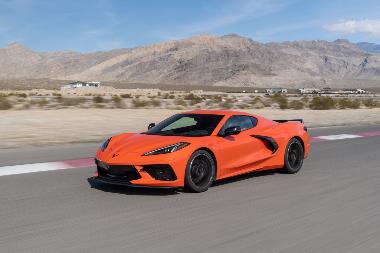
2020 Corvette Stingray: Re-imagined with a mid-engine setup and 490hp
Tuesday, Aug 18, 2020
The original second-generation C2 Corvette Sting Ray (1963-1967) rocketed into America’s consciousness with a powerful group …
Show MoreThe original second-generation C2 Corvette Sting Ray (1963-1967) rocketed into America’s consciousness with a powerful group of engines that ranged from 327 cubic inches to 427 ci. and galloped as many as 435 horses. Corvette’s Generation-3, or C3, shortened the marque to one word, “Stringray” (1968-1982) and was powered by engines ranging from 305 ci. to 454 ci. engines with ranges of muscle from an un-Vettelike 270 horses to a more appropriate 450 hp.
Brought back in 2014, and capturing a carload of awards for performance and appearance, while winning “Best-in-Class” honors, the Corvette Stingray continues to move forward with exterior, connectivity and technology enhancements that offer customers more personalization choices and convenience features. For 2020, the C8 (eighth-generation) Corvette sees a brand new, re-imagined Stingray with the brand’s first-ever production mid-engine Corvette and new levels of performance, tech advances, craftsmanship and luxury. Corvette’s marketing department heralds the new Stingray as a sports car that “… looks and feels like a Corvette, but drives better than any vehicle in Corvette history.” And in terms of the Corvette power legacy, its 490 horses eclipses the original by a herd of thoroughbreds.
Built at GM’s Bowling Green, Kentucky, assembly plant, the 2020 Corvette Stingray is longer, wider and a few pounds heavier, with the same aerodynamic height and with nearly the identical cockpit accommodations as the previous generation. The new mid-engine layout gives the 2020 Stingray better weight distribution, with the rear weight bias enhancing performance in a straight line and on the track and better driver control with driver positioning closer to the front axle, almost on top of the front wheels.
Stingray’s design, inspired by racing and aeronautics, employs a bold, futuristic expression with mid-engine exotic proportions that still evokes Corvette. The 2020 Stingray is enhanced by low profile headlamps designed around all-new projectors; completely hidden door, hood and hatch releases that do not disrupt the sculpted design; large side air intakes for engine cooling and aerodynamic performance; and a canopy-forward stance that was inspired by F22s, F35s, other modern fighter jets and by Formula One racing.
The new 2020 Stingray Coupe gains 5.4 inches in length, 2.2 inches in width and 0.5 inches in wheelbase, with the same height as last year, and now measures 182.3 inches long, 76.1 inches wide and an aerodynamic road-hugging low 48.6 inches high on a 107.2-inch wheelbase. Stingray weighs in with a curbweight of 3366 lbs., though with a full set of options, you could top out at 3650 lbs.
The 2020 Stingray’s cockpit is driver-oriented with passenger comfort, augmented by premium interior materials executed at a high level of quality and craftsmanship. Hand-wrapped, cut-and-sew leather components with thick press stitching and generous use of real metal highlight the environment. The jet fighter-inspired wraparound cockpit is cozy with good sightlines and tech and comfort go hand-in-hand with intuitiveness. Corvette Stingray’s interior combines luxury with a sports car feel, and packed with tech and comfort amenities with seating for two, Stingray provides 37.9 inches of headroom, an accommodating 42.8 inches of legroom and 54.4 inches of shoulder room in luxurious seats. New technology features include Corvette’s next-generation high-res infotainment system; Learn-as-you-go voice recognition; improved real-time traffic; a new 12-inch customizable instrument cluster tailored to all six driver modes; heated steering wheel; premium audio systems and the most personalization options ever for Corvette.
Talking power, the first production mid-engine in Corvette history runs with a small-block 6.2-liter LT2 V8 rated at 490 horsepower and 465 lb-ft of torque. When equipped with the Z51 performance package, maximum horsepower bumps up to 495 and peak torque to 470 lb-ft. Chevrolet says the Z51 will do sub-3.0-second zero-to-60 dashes, and my test 490-hp setup still smoked the sprint in 3.1 seconds during an 11.4-second hand-timed quarter-mile.
Response is rocketlike and steering is attentive with enough predictable understeer to be autocross entertaining. Racecar tight and road hugging, Stingray is fun, highway worthy, in-town maneuverable, versatile and exciting. You can set the exhaust note to quiet mode, but, the exhaust growl is part of the Corvette personality to me sooooo growl away.
The setup is EPA rated at 16mpg/city and 27mpg/highway and I averaged 18.6 mpg through in town errands, highway cruises and lots of tire smoking.
The 2020 Corvette Stingray Coupe bases at $59,995 for the 1LT trim and the Convertible stickers at $67,495. Three Coupe trim levels will take you up to $71,945 for the heavily uptweaked 3LT. More than 50 percent of Corvettes sold are 1LT trims, so my test vehicle started with that. Sebring Orange Tintcoat exterior paint added $995 and was striking against Jet Black Performance Textile interior with Jet Black Leather seats. For $5000 the Z51 Performance package and its 5 extra hp, and performance spoiler, front splitter, exhaust, brakes, suspension, rear axle, tires and slip-differential is popular, but we went without it. Lots of cosmetics, decals and exterior and interior enhancements are available, but my test ride passed on them. Inside, we opted up with the Chevrolet Infotainment 3 Premium System with Navigation and 8-inch diagonal HD color touchscreen for $1795. Destination freight charges of $1095 put the sticker-as-tested at $60,990, which seemed low for this new legend.
You can see the 2020 Corvette Stingray and more than 5,000 Corvettes that cross the 67-year history of America’s sports car, at the world’s largest Corvette event in the world – 2020 Corvettes at Carlisle, August 27-30 at the Carlisle (PA) Fairgrounds. The event represents all generations of “America’s Classic Sports Car,” and includes burnouts, autocross competition, a huge swap meet and a parade and street party in downtown Carlisle. And there are fun events lined up for the entire family.
> Visit www.CarlisleEvents.com for more on the automotive hobby.
Mike Blake, former editor of KIT CAR magazine, joined Carlisle Events as senior automotive journalist in 2004. He's been a "car guy" since the 1960s and has been writing professionally for about 30 years. </I>
-
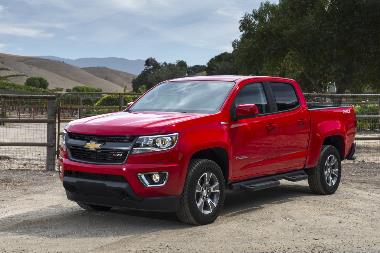
2020 Chevrolet Colorado: Mid-size Pickup Combines Nimbleness and Maneuverability
Tuesday, Aug 11, 2020
Beginning in the mid-to-late 1990s, the mid-size pick-up truck segment seemed to have lost its spirit and public appeal. However, in the early 2000s, …Beginning in the mid-to-late 1990s, the mid-size pick-up truck segment seemed to have lost its spirit and public appeal. However, in the early 2000s, the segment revitalized as consumers began thinking that smaller might be better at times, so Chevrolet took notice and returned to the small-package pick-up genre in 2004 with the Colorado, a compact pick-up launched to replace the Chevy S-10, in tandem with the GMC Canyon, which replaced the GMC S-15.Show More
Thinking outside the truck box for Colorado’s second generation in 2012, Chevrolet resisted the impulse to build a “baby Silverado” by developing Colorado-specific architecture with a spirited demeanor. Colorado’s design is unique with a confident stance, aggressiveness, tall bedsides, a bold raked belt line for the cab, wrap-around headlights, distinctive trapezoid grille and more subtle fender flares. And the exciting ZR-2 and ZR-2 Bison come with a widened stance, higher suspension and enhanced off-road capabilities. Chevrolet also recognized that in trucks, power takes precedence, and to address that, Colorado, which began with 116-hp and 142-hp engines (206-to 216-lb-ft of torque) in 2004, has steadily increased its muscle to as much as 308 horses on one engine option and up to 369 lb-ft of torque on another.
Next year, Colorado will refresh with an updated grille, and a third generation should hit the showrooms in 2023 or 2024. So the second-Gen Colorado for 2020 adds only a key fob-operated tailgate lock control, a Tire Fill Alert, and Package-level changes including the Safety Package now available for the Z71 trim, changing the Chrome Luxury package to the Luxury Package, now available on Crew Cab models, and deletion of several cab long bed models, as well as the Redline and RST Luxury Special Packages.
With a Crew Cab and 5-foot-2-inch box (it is also offered with a 6-foot-2-inch box and can be optioned with an Extended Cab), the 2020 Chevrolet Colorado measures 212.7 inches in length, 70.6 inches high (in 4WD) and 74.3 inches wide on a 128.3-inch wheelbase (the larger box requires 224.9 inches in length on a 140.5-inch wheelbase). Step-in height is 22.6 inches and minimum ground clearance is 8.2 inches. Curb weight for my LT trim came in at 4433 lbs. for the 3.6-liter engine, short box and Crew Cab in 4WD – the long box adds about 63 lbs. The Colorado features triple-sealed doors inlaid in the body sides and offers the segment’s first active aero grille shutters, designed to enhance aerodynamics when closed.
The interior is packed with convenience and safety features that blend attention to the driver’s need for work, recreation and everyday comfort. A bold, upright instrument panel with large controls and a center console with a floor-mounted shifter are a center focus, and a sculpted headliner that enhances headroom. Halo lighting on key controls offer an easier view and an open area at the front of the center console for easier phone charging are upscale appointments for a smaller truck.
Inside, with the Crew Cab, driver and passengers get 41.4 inches of front headroom and 38.3 in the Crew extension, 45.1 inches of front legroom with 35.8 for those in the second row, and shoulder room of 57.5 inches in row one and 56.2 in row two.
Engine choices are a 2.5-liter DOHC I-4 engine that puts out 200 hp and 191 lb-ft. of torque and is EPA rated at 19mpg/city and 24mpg/highway for the 4WD version, while the 3.6-liter V-6 delivers 308 hp and 275 lb-ft. of torque with an EPA estimate of 17/24 for 4WD. The 2.8-liter turbodiesel that hums out 181 hp and a strong 369 lb-ft is rated at 19/28. My mixed-use tests put the 3.6-liter’s average at 21.1 mpg.
Nimble and maneuverable, utilizing its wide mid-size stance and demeanor, my Colorado LT’s electric power-assisted rack-and-pinion steering was responsive, and its maneuverability was markedly better than that of a full-size truck, but not carlike. I found only minimal bed looseness as my test truck attacked turns with confidence. Acceleration was steady and predictable in all ranges, and at the track, my LT 3.6 completed a hand-timed zero-to-60mph sprint in 7.1 seconds, and a quarter-mile in 15.5 (hand-timed). My LT’s 4-wheel-drive independent coil-over-shock front suspension with twin-tube shocks, mated to a solid axle rear with semi-elliptic two-stage multi-leaf springs and twin-tube shocks smoothed most road inconsistencies and was adequate for soft-road, and non-extreme off-road challenges.
The 2020 Chevrolet Colorado starts at $27,895 for the base WT trim in 2WD with the 2.5-liter engine, $30,895 for the LT in 2WD with the 2.5-liter engine, $35,095 for the Z71 trim and 3.6-liter, $44,195 for the base ZR-2. My test LT in 4WD started at $35,595 and upgraded to the 3.6-liter powerplant. Red Hot exterior paint was no extra charge, and a Luxury Package that added Jet Black, Leather-appointed seat trim, 4-way power front passenger seats, power driver seat lumbar control, the LT Convenience package, projector-beam headlamps, heated driver and front passenger seats, automatic climate control, remote start, manual sliding rear window, heated steering wheel, rear window defogger, fog lamps and more, added $2715. Front and rear splash guards added $180, Navigation added $495, 7-speaker Bose audio system was $500, The Safety Package for $690 added Forward Collision Alert and Lane Departure Warning, and destination and freight added $1195 for a sticker-as-tested of $40,175.
> Visit www.CarlisleEvents.com for more on the automotive hobby.
Mike Blake, former editor of KIT CAR magazine, joined Carlisle Events as senior automotive journalist in 2004. He's been a "car guy" since the 1960s and has been writing professionally for about 30 years. </I>
-
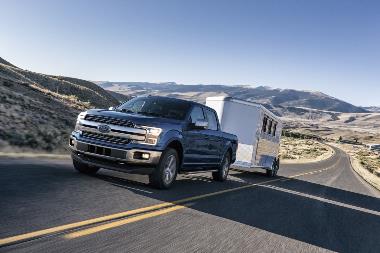
2020 Ford F-150: America’s top-selling truck stays the course – revise set for next year
Tuesday, Aug 4, 2020
An all-new Ford F-150 is prepared and ready for model-year 2021, but for 2020, the perennial top-selling vehicle in America, for the past 42 years …
Show MoreAn all-new Ford F-150 is prepared and ready for model-year 2021, but for 2020, the perennial top-selling vehicle in America, for the past 42 years is staying the course with only a few small changes.
As the F-150 upgraded its power systems, exhaust setup, interior and connectivity arrangement last year, “America’s Truck” adds Ford Co-Pilot360™ as now standard Lariat, King Ranch®, Platinum, Limited and consists of Auto-High Beam Headlamps, Blind Spot Information System with CrossTraffic Alert and Trailer Tow Monitoring, Lane-Keeping System, Pre-Collision Assist with Automatic Emergency Braking, and Rear View Camera. Ford Co-Pilot360 Assist™ is also now included on Platinum and standard on Limited, and consists of Adaptive Cruise Control with Stop-and-Go, Voice-Activated Touchscreen Navigation System with Pinch-to-Zoom Capability, SiriusXM Traffic and Travel Link®. Several appearance packages have been changed for 2020, and three new colors have been added to the exterior palette -- Iconic Silver, Rapid Red Metallic Tinted Clearcoat and Star White Metallic Tri-Coat.
Additionally, for 2020, FordPass™ Connect with 4GLTE Wi-Fi®, which connects up to 10 devices, is now standard for F-150 XLT and above and myriad technologies can be optioned including SYNC® 3 with Navigation, 8-inch LCD capacitive touchscreen with pinch and swipe capability, Apple CarPlay™ and Android Auto™ and much more.
The 15th-generation F-150 trim levels for 2020 include XL, XLT, Lariat, King Ranch, Platinum and Limited, in addition to the stylish, super-power, 450-hp/510 lb-ft of torque off-road Raptor. Law enforcement can choose the F-150 Police Responder (375hp and 470 lb-ft) – the industry’s first and only pursuit-rated pickup, giving agencies a more versatile and capable patrol vehicle
Built “Ford Tough” at Ford’s Dearborn Truck Plant in Dearborn, Michigan, the 2020 Ford F-150 is constructed with a high-strength steel frame and an advanced, high-strength, military grade aluminum body. The body on frame truck comes in three cab schemes: Regular Cab, SuperCab, or SuperCrew®.
With sculpted creases and angles that modify the truck’s boxiness, F-150’s exterior is enhanced by configurable daytime running lamps, power sideview mirrors on XL and above trims, a quick-release tailgate with lock; and on my text XLT, a chrome, two-bar style grille with chrome nostrils, black surround and black background mesh.
Confidently long, my 4x4 test Ford F-150 XLT with a SuperCrew® cab and 6.5-foot bed measured 243.7 inches long, 77.3 inches high for the 4x4, and 79.9 inches wide on a 156.8-inch wheelbase. Ground clearance is 9.3 inches.
The F-150 is a muscular truck, with six engine choices: a 2.7-liter twin turbo EcoBoost V-6 that produces 325 hp and 400 lbs-ft of torque; the 3.0-liter Power Stroke turbo that pops out 250hp and 440 lbs-ft; the 3.3-liter Ti-VCT FFV engine that develops 290 horses and 265 lbs-ft; the 3.5-liter V-6 turbo EcoBoost engine with twin independent variable camshaft timing that delivers 375hp/470 lbs-ft; the High Output twin-turbo 3.5-liter EcoBoost V-6 engine that increases power numbers to 450 hp and 510 lbs-ft of torque, and the 5.0-liter Ti-VCT VB FFV engine that thunders out 395 hp and 400 lbs-ft. That engine propelled my test ride.
My test XLT’s 5.0-liter V-8 was mated to an electronic 10-speed automatic transmission, and the combination was powerful and responsive. On the track, a zero-to-60mpg dash was completed in a hand-timed 6.0 seconds-flat during a 14.5-second quarter-mile (hand-timed). Stable and aggressive on the highway, steering is trucklike, but predictable. Rated at 12mpg/city, 15mpg/highway and 13mpg/overall, I daily-drivered my truck in town, on the highway, on a track run and some soft-roading for an average of 14.1 mpg.
With six interior configurations, my test ride’s SuperCrew cabin was packed with safety items and amenities measured a roomy 40.8 inches of front headroom with 40.4 inches for those in the cab. Front legroom was a generous 43.9 inches with second-row passengers getting 43.6 inches. Shoulder room was a spacious 66.7 inches in row one and 65.9 in the rear seats.
For 2020, Ford F-150 is offered in seven basic trims with modifications for six different engines, three bed lengths and three cab sizes. The base XL starts at $28,745; the XLT as was my test truck, started at $34,760 (gaining cosmetics and the Power Equipment Group); the upscale Lariat bases at $42,750; the luxurious King Ranch® model starts at $52,990; the aggressively powerful and stylish Raptor starts at $53,455; the upper-lavish Platinum trim starts at $55,520 and the top-tier Limited starts at $67,735.
My test XLT, which adds SYNC®3, Ford Pass Connect, stylish grillework, the Power Equipment Group and Chrome Front and Rear Bumper to the XL, based with a Regular Cab and 6.5-foot box; the 3.3-liter engine, 6-speed automatic transmission and 4x2 drive, but my test truck was enhanced with several options. The powerful 395-hp 5.0-liter V-8 engine added $1000; and as I am a 4x4-guy, the 4x4 configuration was added in a $3445 package; A SuperCrew cab added $6525; Rear window defroster added $220; Black platform running boards added $250; the Reverse Sensing System and trailer hitch added $425; Destination charges were $1695 and an Acquisition fee of $645 put the sticker-as-tested at $49,005, but cash incentives of up to $2500 may be available to put the sticker price at $46,505, so check with your local dealer.
You can see Ford trucks through the decades, as well as American and foreign trucks from many manufacturers, and more than 2,000 trucks of all eras, at the Carlisle Truck Nationals, August 7-9 at the Carlisle (PA) Fairgrounds. This event and has been one of the world’s largest truck shows since 1991. This celebration of trucks features Pick-ups, Heavy-duty Trucks, Big Rigs, Mini Trucks, Antiques, Custom Vans, 4x4s, Jeeps, SUVs, Vintage Fire Trucks, Monster Trucks and more.
<I> Visit www.CarlisleEvents.com for more on the automotive hobby.
Mike Blake, former editor of KIT CAR magazine, joined Carlisle Events as senior automotive journalist in 2004. He's been a "car guy" since the 1960s and has been writing professionally for about 30 years. </I>
-
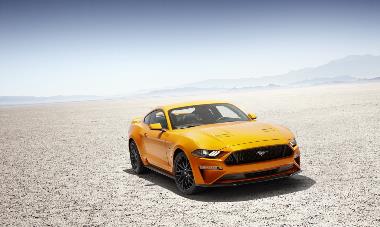
2020 Ford Mustang GT: Pony King Upgrades Performance, Adds Colors and Wheel Options
Tuesday, Jul 28, 2020
Not to be confused with the half-million-dollar Ford GT, the much more affordable Ford Mustang GT is an exciting trim level of the world’s top-selling …Not to be confused with the half-million-dollar Ford GT, the much more affordable Ford Mustang GT is an exciting trim level of the world’s top-selling muscle sports coupe for the last five years running, the Ford Mustang. The vehicle that originated the “Pony Car” in 1964, Mustang became the most successful Ford launch since the Model-A, and in the ensuing 56 years, Mustang has sold nearly 10 million vehicles to lay claim to being the greatest-selling Pony Car of all-time.Show More
Mustang underwent its last complete redesign in 2015, and while it freshened for 2018 with a sleek refined design, advanced tech and improved performance enhancements, Mustang comes back for 2020 with few changes, but performance is key. Rekindling Mustang’s golden age of performance, Ford has added nine separate performance variants to its lineup. Two of the best additions are the entry-level Mustang EcoBoost that gets an all-new performance package that adds 20 horses to the setup and aero suspension and brake components; and the upper echelon Shelby GT500 gains a Carbon Fiber Track Package.
Also for 2020, the exterior color palette changes, as Rapid Red, Iconic Silver, Grabber Lime, and Twister Orange are new, and Ingot Silver, Ruby Red Metallic, Orange Fury Metallic, and Need for Green are all retired. Inside, passenger seats are now only four-way power as opposed to six-way power, FordPass Connect is now standard on all models, and outside, there are two new wheel designs,
Mustang gallops to you in fastback and convertible designs, with an aggressive grille and Pony insert, rounded, sleek lines and muscle-car athleticism. The 2020 Mustang Fastback GT model I tested measured 188.5 inches long and 75.4 inches wide. Height is 54.3 inches for the Fastback and 54.9 for the Convertible, on a 107.1-inch wheelbase. With the 5.0-liter engine, the Fastback GT with a manual transmission weighs 4398 lbs. – as much as 600 lbs. heavier than a standard Mustang trim.
Performance and power have been signature Mustang attributes for most of its 56 years, and the 2020 engines continue the legacy. EcoBoost models have a turbocharged 2.3-liter 4-cylinder engine stampeding 310 horsepower and 350 lb-ft of torque, and the high-performance option adds 20 hp to that. The 5.0-liter V-8 that powered my Mustang GT growled out 460 hp and 420 lb-ft, and the Shelby GT350 is powered by a 5.2-liter V-8 that thunders out 526 hp and 429 lb-ft. Above that, the Shelby GT500 rocket blasts out 760 horses and 625 lb-ft. – that’s 100 hp and 75 lb-ft more than the Ford GT super coupe produces. All Mustangs are rear-wheel drive and come with a 6-speed manual transmission. A 10-speed automatic transmission with paddle shifters is optional on all except the Shelby.
My test Mustang GT was a willing tire-smoker when called upon. My track tests included a zero-to-60mph dash in 4.3 seconds (hand-timed), to start a 12.5-second (hand-timed) quarter-mile. On the highway, my Mustang GT accelerated past traffic with ease, aerodynamically hugged the pavement, cornered with autocross precision, shifted smoothly and smoothed out most road imperfections while maintaining a solid driver’s feel for the road. The Mustang GT is EPA rated at 15mpg/city, 25mpg/highway with the manual transmission, and I averaged 17.7mpg in mixed-use, heavy-footed tests.
Inside, the cabin is upscale, comfortable and tech-savvy. Headroom is tight for taller drivers and passengers and cozy for average-size inhabitants, with 37.6 inches (Fastback) in row one and 34.8 in row two. Legroom is spacious up front at 45.1 inches and a knees-in-the-chest 29.0 inches in row two. Shoulder room measures 56.3 in front and 52.2 in the rear.
The 2020 Ford Mustang is available in Fastback and Convertible configurations and a total of 11 trim choices. The Fastback comes in five trims: EcoBoost® Fastback ($26,670); EcoBoost® Premium Fastback ($31,685); GT Fastback ($35,880); GT Premium Fastback ($39,880) – this is the trim I tested and it upped the ante with Leather-Trimmed Heated and Cooled Front Seats, SYNC®3, Heated Mirrors with Integrated Turn Signal Indicators, Selectable Drive Modes with Toggle Switches and a 9-Speaker Stereo added to the base Mustang GT; and The Bullitt™ trim starts at $47,705. The Mustang Convertible has three trims: EcoBoost® Convertible ($32,170); EcoBoost® Premium Convertible ($37,185) and GT Premium Convertible ($45,380). And The Shelby GT also has three trims: the Shelby GT350 starts at $60,440; the Shelby GT500 ($72,900) and the Shelby GT350R ( 73,435).
My test GT Premium Fastback with the 5.0-liter engine, manual transmission and dual-exhaust tips upcharged $495 for Twister Orange exterior paint. Cool racing stripes would have added $475, but my test car was not striped. I am a stick-shift guy (manual 6-speed transmission with Rev Matching for the Mustang GT), and saved $1595 by not opting for the 10-Speed SelectShift® Automatic Transmission.
The 401A Equipment Group Package added $2200 for a 12-inch LCD Digital Instrument Cluster with MyColor®, Heated Steering Wheel, Premier Trim with Color Accent Group, Accent Stitched Center Console Lid, Wrapped Knee Bolsters with Accent Stitch, Color-accented Leather-trimmed Seats, Linked Graphite Aluminum Instrument Panel, Voice-Activated Touchscreen Navigation System, and more. The Ford Safe and Smart Package added $1000 for Adaptive Cruise Control, Auto High Beam, Lane Keeping System, Pre-Collision Assist with Pedestrian Detection, Automatic Emergency Braking, Forward Collision Warning with Brake Support and Rain-Sensing Windshield Wipers. Destination charges of $1195 put the sticker-as-tested at $44,770.
To check out the new Mustang GT and a showcase of more than 3200 Ford, Lincoln, Mercury and Euro Ford vehicles spanning more than a century, visit the largest all-Ford event in the world, this year’s Carlisle Ford Nationals at the Carlisle, PA Fairgrounds, July 31-August 2. From trucks to muscle cars, you can see them all including a 15-year-anniversary display of the Ford GT, a 50-year celebration of Capri, and displays on Merkur, Thunderbird, Starliner, Euro Fords, Grabbers, Mustangs and more. You can also see Ford’s newest offerings in the new vehicle walk-round.
> Visit www.CarlisleEvents.com for more on the automotive hobby.
Mike Blake, former editor of KIT CAR magazine, joined Carlisle Events as senior automotive journalist in 2004. He's been a "car guy" since the 1960s and has been writing professionally for about 30 years. </I>
-

2020 Ford GT: Super Car Gains Even More Power and Special Exterior Looks
Tuesday, Jul 21, 2020
I test drive everything I can get my driving gloves on for this column, from muscle cars to “Soccer-Mom” vans, and from luxury sedans to econoboxes …
Show MoreI test drive everything I can get my driving gloves on for this column, from muscle cars to “Soccer-Mom” vans, and from luxury sedans to econoboxes, but seldom do I get to drive a half-million-dollar Super Car. Generally, I make my review cars daily drivers, and use them for everyday life in addition to my cruises and track tests, and usually they are my ride for a week. Well, that changed for this review, as I got my hands on a 2020 Ford GT Super Car – a three-quarter-million-dollar vehicle – but the test was only for a few hours, so I didn’t pick up groceries or building supplies, and I didn’t take a four-hour cruise in it. Nevertheless, the 120 minutes I had in this week’s test car were certainly worth it.
The quick background on the Ford GT is that it shouldn’t be confused with the Mustang GT, and that the Ford GT is a mid-engine two-seater super sports coupe that was launched in model-year 2005 as an homage to the legendary GT40 that won at Le Mans from 1966-1969. It couldn’t be called the GT40, as the “40” referenced 40-inches in height and the new version was taller; also, a British company, Safir Engineering, built continuation GT40 cars, owned the name and wanted $40 million for use of the name, so Ford went with GT. As for the height, I drove a GT40 and even at my 5-foot-9, the 40-inch-tall exterior is tough to squeeze into in the inside, admittedly, while wearing a helmet. Racers including A.J. Foyt had to remove the cushioned seats and pretty much sat on the floorboards to wedge into the GT40 during races, so the 2005 Ford GT was 44.3 inches high for better interior fit. After a two-year run, the Ford GT was on hiatus until Model-Year 2017 when its renaissance began as a two-door coupe, with more power, revised gullwing doors, more interior space, low downforce and aerodynamic efficiency, and a true look and feel of the historical GT line.
The GT40s put out 350hp, and first Ford GTs in 2005, delivered power output of 550 hp 500 lb-ft of torque. This year’s super car gains 13hp over last year and thunders out 660 hp and 550 lb-ft. With production set to conclude in 2022, Ford added a few new items for 2020, including, better cooling with gallery-cooled pistons and higher-energy ignition coils, airflow gains through new buttress air ducts designed to increase air flow by 50 percent while larger intercoolers keep charge air temperatures cooler, preserving peak power. Increased suspension damping enhances handling and body control, and Ford Performance added premium Akrapovič titanium exhaust as standard equipment.
Newly available Ford GT Liquid Carbon places an emphasis on GT’s lightweight sculpted carbon fiber body completely free of paint color. A special clearcoat punctuates each GT’s unique carbon fiber weave in this limited-edition appearance, $250,000 option. Ford has also updated the Gulf Racing Heritage Livery, which now uses a black pinstripe to divide the unique orange and blue color scheme, to invoke the look of the 1968-69 Le Mans-winning Ford GT40. For 2020 models, the number was changed from 2019’s 6 to 9 to reflect the second of the back-to-back winning GTs.
The teardrop shape of the Ford GT is the result of extensive work in the wind tunnel. At 187.5 inches long, 43.7 inches high and 78.9 inches wide on a 106.7-inch wheelbase, GT’s road hugging aerodynamics weigh in with a curbweight of 3354 lbs. Ground clearance has two settings: 4.7 inches at normal and 2.75 inches in low setting. The carbon fiber look is augmented by gullwing doors that taper towards vast vents feeding the mid-mounted engine. At each corner, forged lightweight carbon fiber 20-inch wheels complete the image. In the rear, a large wing can deploy above the twin exhaust outlets, with functional vents, diffuser round taillights and exhaust pipes shout, “look, what I’m driving.”
Inside, you get cozy seating for two with a snug 35.7 inches of headroom, 43.0 inches of legroom and 48.7 inches of shoulder room with 45.1 inches for your hips. The luxury racecar interior has all the upscale niceties, plus leather, environment controls, Driver Configurable 10.1-inch Color LCD Instrument Cluster, 6.5-inch Center LCD Touch-Screen with Swiping and Pinch-to-Zoom Capabilities, SYNC® 3 – Enhanced Voice Recognition Communications and Entertainment System, Voice-Activated Touch-Screen Navigation System, Intelligent Access with Push-Button Start, Rear View Camera and more.
Rear-wheel drive power and performance start with GT’s 3.5-liter EcoBoost® twin-turbo V-6 GTDI engine and 7-Speed, Dual Clutch Automated Manual Transmission with Sequential Shift Controls Paddles. The system is throaty and growls its 660hp and 550lb-ft of torque without hesitation and in racecar fashion. Gearshifts are seamless and handling is slotcar sticky. On the road, passing was completed before I could wave goodbye. On the track, my test GT scorched the asphalt in hand-timed runs of 3.1 seconds for a zero-to-60mph sprint, and blazed the quarter-mile in 10.9 seconds -- the original GT40 was a 4.7-second dash and 13.3-second quarter-miler. The system is EPA rated at 11mpg/city, 18mpg/highway and 14mpg/combined. I averaged 14.4 mpg with tires smoking and highway sprints taking up most of the test time.
My GT test ride had no sticker, but the 2020 Ford GT starts at around $500,000, with the Liquid Carbon option added for an additional $250,000 premium; oh, and there is a gas-guzzler premium.
You can see the 2020 Ford GT and more than 3200 Ford, Lincoln, Mercury and Euro Ford vehicles – some vehicles more than 100 years old, some brand new and thousands in between – by visiting the largest all-Ford show in the world, this year’s Carlisle Ford Nationals at the Carlisle, PA Fairgrounds, July 31-August 2. From trucks to muscle cars, you can see them all. And there will be a special 15-year-anniversary display of the Ford GT, a 50-year celebration of Capri, and displays on Merkur, Thunderbird, Starliner, Euro Fords, Grabbers, Mustangs and more. You can also see Ford’s newest in the new vehicle walk-round and join in or watch the Ford Parade and Street Party in downtown Carlisle with some 400 vehicles on parade Saturday night, June 6.
> Visit www.CarlisleEvents.com for more on the automotive hobby.
Mike Blake, former editor of KIT CAR magazine, joined Carlisle Events as senior automotive journalist in 2004. He's been a "car guy" since the 1960s and has been writing professionally for about 30 years. </I> -
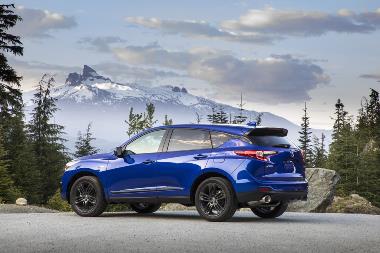
2020 Acura RDX: Focused on luxury, safety and family performance
Tuesday, Jul 14, 2020
Acura raised the bar in the luxury crossover segment in 2006, when it launched RDX. Redesigned for its third generation in 2019, RDX essentially st …
Show MoreAcura raised the bar in the luxury crossover segment in 2006, when it launched RDX. Redesigned for its third generation in 2019, RDX essentially stands pat for 2020 except for a new Platinum White exterior paint scheme and a few cosmetics. Even without massive changes, RDX has received industry accolades including taking home a “2020 Best Family Luxury Car” honor by Parents magazine; earning “Best-Buy” status from Consumer Guide® and receiving top-safety pick recognition by the Insurance Institute for Highway Safety (IIHS).
Preferring to load the basic vehicle and allow buyers to modify and tailor the vehicle to fit personal needs and desires, the 2020 RDX is packaged as a single model with no trim levels, but as a model that can be equipped with appropriate upwteaking packages.
Interior augmentations include Acura True Touchpad Interface™ with 10.2-inch HD display, Acura sports seats with available full-grain perforated Milano leather and up to 16-way power adjustment (12-way standard), Natural Language Voice Recognition, Frameless interior rearview mirror with integrated HomeLink™, available heated steering wheel and available Surround-View Camera System
Last year, RDX became the first in a new generation of Acura models designed and engineered around Acura's innovative Precision Crafted Performance brand values. A top-seller in the premium compact SUV niche, the current RDX generation model is the first RDX model to be designed and engineered in America, with styling design conducted in the Acura Design Studio in Los Angeles, California. Its development was conducted by Acura’s engineering team headquartered in Raymond, Ohio, adjacent to the RDX's manufacturing home in East Liberty, Ohio where RDX is produced, using domestic and globally sourced parts.
The 2020 RDX commands the road with an aggressive and athletic pose, long and wide stance, wheels pushed to the corners and sharply sculpted design details. RDX exterior highlights include exceptional aerodynamics with specially shaped front-end components, a rigid, lightweight and acoustically sealed chassis, purposely positioned rear spoiler, and a rounded in-motion demeanor. Premium exterior details include all-LED lighting featuring the next generation of Acura's Jewel Eye™ LED headlights and an ultra-wide power tilt and slide panoramic moonroof, standard on all grades. Measuring a robust 186.8 inches long, 65.7 inches high and 74.8 inches wide on a 108.3-inch wheelbase, RDX weighs in with curb weights of 3783 lbs. to 3829 lbs., depending on added packages. Ground clearance is a generous 8.2 inches.
The RDX power system is available with either front-wheel drive or all-wheel drive configurations, and the luxury SUV delivers with an attentive direct-injected and turbocharged 2.0-liter 16-valve DOHC inline-4-cylinder engine with VTEC® valvetrain. Mated to a niche-first 10-speed automatic transmission, the set-up delivers a peak output of 272 horsepower and 280 lb-ft of torque. The system shows virtually no lag, with solid off-the-line acceleration, and passing is power-plus. Uphill dominance is effortless and around-town smoothness is the order of the day. In track tests, RDX performs much better than one would expect, with steady and exciting time trials -- 5.7-second (hand-timed) zero-to-60 dash and a 14.4-second (hand-timed) quarter-mile.
While not an autocross champion, RDX handling was above average for the segment, with aggressive steering compliance, predictable understeer, a smooth and confident surface ride and average body sway and top wobble during autocross maneuvers.
From a fuel-efficiency perspective, RDX did well for the niche and met its EPA rating of 22mpg/city, 28mpg/highway and 24mpg/combined, with a mixed-use test average of 23.8 mpg.
The RDX cabin offers a high level of convenience and technology in a comfortable environment. High-end appointments fill the interior and include authentic brushed aluminum accents, available genuine Olive Ash wood trim, hand-wrapped and stitched leather trim, and soft full-grain Milano leather seating surfaces. Filled with tech, infotainment and comfort, the RDX cabin affords ample room for five, providing 40.0 inches of front headroom and 38.0 inches in row two; front legroom is 42.0 inches and rear legroom is 38.0; while shoulder room is 60.0 inches up front and 57.0 inches in the rear seats.
The 2020 Acura RDX has earned the highest possible safety ratings from the Insurance Institute for Highway Safety (IIHS).The third-generation RDX offers the highest level of standard safety and driver-assistance features in the model's history – and in its class. The AcuraWatch™ suite of driver-assistance technologies is now standard on all RDX grades, along with a Multi-Angle Rearview Camera, while the Technology Package and higher grades add Blind Spot Information, front and rear parking sensors and Rear Cross Traffic Monitor.
The 2020 Acura RDX starts at $37,800 in Front-Wheel Drive. Apex Blue Pearl exterior paint required several package upgrades including changing the standard Ebony interior to Red and the standard 19-in Glitter Silver Wheels to A-Spec 20-in. Shark Gray Wheels. The change also added the $3200 Technology Package with Navigation, Premium Sound, Leather Seats and Driver Assistance; and the $3000 A-Spec® Package with Exterior Design and Interior Detail tweaks, Surround Sound and 20-Inch Wheels. I am a believer of All-Wheel-Drive in most cases, and we upgraded to Super Handling All-Wheel Drive™ for $2000. With a Destination Charge of $1025, my 2020 Acura RDX test vehicle stickered at $47,425.
Mike Blake, former editor of KIT CAR magazine, joined Carlisle Events as senior automotive journalist in 2004. He's been a "car guy" since the 1960s and has been writing professionally for about 30 years. -
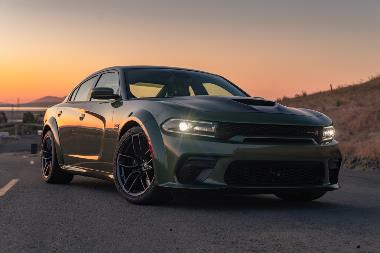
2020 Dodge Charger: Widebody, Cosmetic and Power Tweaks for Muscle Car Icon
Tuesday, Jul 7, 2020
America’s only four-door muscle car, the Dodge Charger, has added a Widebody exterior to its high-performance lineup for 2020, and by tweaking its …
Show MoreAmerica’s only four-door muscle car, the Dodge Charger, has added a Widebody exterior to its high-performance lineup for 2020, and by tweaking its supercharged 6.2-liter HEMI® Hellcat V-8 engine to produce 717hp, the 2020 Dodge Charger SRT Hellcat takes home the honor of being the most powerful and fastest mass-produced sedan in the world. The top-selling American sedan on the market, and America’s only four-door muscle car, the Dodge Charger continues its strong sales in the seventh year of its seventh generation, with a full redesign, expected for 2021.
With seven trim models and four power options from 300hp to 717hp, the 2020 Dodge Charger lineup, adds a new aggressive and modern Widebody exterior, standard on Charger SRT Hellcat and available on Charger Scat Pack, with new front and rear fascias with integrated fender flares, adding 3.5 inches of width over wider wheels and tires. Also for 2020, the Dodge SRT offers a wide variety of newly designed wheels, wheel finishes, new and updated packages and Equipment Groups, new premium interior materials, three new exterior colors and new badges.
Also in 2020, Dodge offers the Daytona 50th Anniversary Edition on the Dodge Charger SRT Hellcat Widebody, powered by the supercharged 6.2-liter HEMI® Hellcat V-8 engine with an extra boost of power: 717 horsepower and 650 lb.-ft. of torque. Other new items include cosmetic tweaks -- performance hood, fascia, sculpted side sills, spoiler and high-bolstered seats -- on Charger R/T and Charger GT models.
Drawing design cues from its historic 1969 model, Charger is muscular with a pavement-hugging wide body. My Charger R/T test vehicle was 200.8 inches long, 75.0 inches wide and 57.8 inches high on a 120-inch wheelbase, with a curb weight of about 4286 lbs. and ground clearance of 5.2 inches.
Charger has been a muscle beast since inception, and the 2020 version explodes past the original 1965 Charger’s 230 horses with rocketlike set-ups. The standard Pentastar 3.6-liter V-6 engine is efficient and brawny with 292hp and 260 lbs-ft of torque for an EPA rating of 19/city and 30/hwy for AWD. The optional Super TrackPack upgrade increases the power to 300hp and 264 lbs-ft. My R/T trim test ride was powered by the 5.7-liter HEMI V-8 with a throaty 370 hp and 395 lbs-ft. My power mill was rated at 15mpg/city and 24mpg/highway and my pedal-mashing town, highway and track trials averaged 22.6mpg. The Street & Racing Technology (SRT) Scat Pack and Daytona 392 trims benefit from a 6.4-liter HEMI V-8 that muscles out 485 hp and 475 lbs-ft of torque for a rating of 15/city and 24/hwy and street-legal/track-worthy speed. The SRT Hellcat monsters supercharge their 6.2-liter HEMI for a pro-tracklike 707hp to 717hp and 650 lbs-ft of torque for racing and performance capabilities at an EPA rating of 12/city and 21/hwy.
I would have preferred the muscle control of a manual shift, but my 5.7 HEMI was mated to a responsive TorqueFlite 8-Speed Automatic Transmission. Highway passing at speed is bold, and in track tests, my Charger R/T finished off a hand-timed zero-to-60mph sprint in 5.8 seconds, and completed a quarter-mile in 14.2 seconds.
Charger is wide and low and hugs the road, while the responsive rack and pinion steering with electric power assist displays autocross worthiness. Charger’s independent SLA front suspension with high upper “A” arm, coil spring over gas-charged monotube shock absorbers and stabilizer bar and the rear’s one piece lower-control arms on the AWD models provide stable handling.
The driver-oriented interior is luxury-oriented, outfitted with premium, soft-touch materials, a full-color driver information display gauge cluster, and an instrument panel center stack with the newest Uconnect system. The interior harkens back to the 1960s in room with only 38.6 inches of front headroom and 36.6 in the rear seats – fine if you are under 6-feet tall. Legroom is good for even taller drivers and passengers, at 41.8 inches in row one with 40.1 in row two, and wide-body shoulder room of 59.5 inches in front and 57.9 in the rear.
With seven trims and multiple variations and power options, the 2020 Dodge Charger starts at basing from $27,570 for the Charger SXT and $29,490 for the GT, both with a 300-hp set-up, to $66,520 for the 707hp SRT Hellcat Widebody. My 370-hp test 2020 Charger R/T was third on the trim list, base priced at $34,290.
In F8 Green exterior paint, with a Black Carbon dual hood stripe (for $995), we upgraded the standard Black cloth Performance seats with Nappa/Alcantara Performance seats. The Plus Group added $2695 for a cornucopia of items including 20-Inch x 8.0-inch machined with Granite pocket wheels, automatic adjust in reverse exterior mirrors, blind-spot indicator with memory/power/heat mirrors, blind-spot and cross-path detection, heated front and second-row seats, heated steering wheel, power front driver and passenger seats and more. The Driver Convenience Group for $795, added Blind Spot power heated mirrors, Blind Spot and Cross-Path Detection, Auto-Dimming Mirror and more; and the $995 Navigation and Travel Group with SiriusXM® Traffic Plus and Uconnect® 4CNAV with 8.4-Inch Display. Adding Destination charges of $1495 put the sticker-as-tested at $42,475, but 2020 National Retail Consumer Cash incentives of $3700 cut my price to $38,775, so check your local dealer for available discounts.
You can see five decades of the Dodge Charger on display at the Carlisle Chrysler Nationals, at the Carlisle (PA) Fairgrounds, July 10-12. The largest Mopar event in the world, the event features more than 2,800 vehicles from all eras of the Chrysler brand. View classic, muscle cars and high-performance vehicles including displays showcasing 50 years of the Plymouth Duster, 50 Years of the Superbird, 50 Years of Pro Stock and 50 Years of the AAR ‘Cuda and Challenger T/A. There is also a display of the 25th Anniversary of the Neon, and Thrill Rides in Dodge Hellcats, as well as cars, parts, tools, memorabilia, collectibles and more for sale in the event’s Mopar Automotive Flea Market.
<I> Visit www.CarlisleEvents.com for more on the automotive hobby.
Mike Blake, former editor of KIT CAR magazine, joined Carlisle Events as senior automotive journalist in 2004. He's been a "car guy" since the 1960s and has been writing professionally for about 30 years. </I>
-
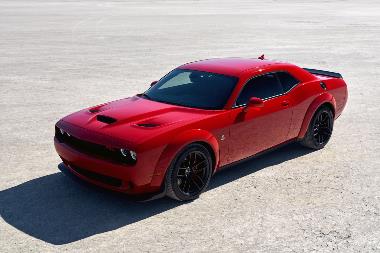
2020 Dodge Challenger: 50 Years of Muscle and Style Celebrated with 797-hp Model
Tuesday, Jun 30, 2020
If you are a fan of muscle cars from the 1960s and 1970s that often ran under 200hp and topped out in the 450-hp range, then you have to love the 2 …
Show MoreIf you are a fan of muscle cars from the 1960s and 1970s that often ran under 200hp and topped out in the 450-hp range, then you have to love the 2020 Dodge Challenger, an icon from the “Muscle Car Wars” that offers a 797-hp version.
Dodge fought the American “Muscle Car” Wars beginning with the 1970 Challenger, debuting in fall 1969 with a Chrysler “E-body” short-deck, long-hood platform it shared with the Plymouth Barracuda. With powertrain choices that ranged from a 145-hp 225-cubic-inch I-6, to a 426-ci HEMI V-8 that thundered out 425 horses (there was also a larger 440-ci V-8 that produced 390 horsepower), Challenger’s first run ended in 1974.
Back as a retro-luxury-muscle car in 2008 and tweaked well in 2015 building on the 1970s architecture, Challenger has added a few trim and wheel options and along the way kept adding horses …from the 707-hp Hellcat in 2016 to the 797-hp SRT Hellcat Redeye this year. Aging, but still vital and iconic, at age 50, Challenger remains in its 2008 generation, updating this year with cosmetics, badging, wheel and exterior color upgrades.
New for 2020 are a limited-production 50th Anniversary Edition available on most trim levels; Shaker hood scoop options; high-impact Gold Rush exterior paint among six new colors; 50th Anniversary logo badges; nine new wheels and finishes throughout the lineup; all-new premium-stitched dash and upper door panels on all models equipped with leather; new flat-bottom leather steering wheel option; and new exterior and interior instrument panel badges.
The five-passenger rear-wheel drive Challenger is assembled in Brampton, Ontario, Canada, with a unitized steel body, a 1971-style split grille, projector headlamps with halo light-emitting diode surrounds and LED tail lamps. In the rear are a body-colored rear spoiler and dual-chromed exhaust tips integrated into the lower rear fascia. My 4182-lb. test Challenger R/T measured an aerodynamic 197.9 inches in length, 75.7 inches in width and 57.5 inches in height on a 116.2-inch wheelbase, providing running ground clearance of 5.2 inches.
Power is a Challenger legacy and the 2020 Challengers continue the muscle history. 2020 Challengers are available with five engine choices and either manual or automatic transmissions. The supercharged 6.2-liter high-output HEMI SRT Hellcat Redeye V-8 engine thunders out an eye-popping, heart-racing 797hp and 707 lb-ft of torque. The “regular” 6.2-liter supercharged HEMI V-8 that muscles-up the Challenger Hellcat is next, with 717 horsepower and 656 lb.-ft. torque, and is EPA rated at 13mpg in the city and 22mpg on the highway -- but at 717hp, who is quibbling over mileage per gallon? A 6.4-liter HEMI V-8 is also available that delivers 485 hp / 475 lb.-ft. torque and is rated at 13/city and 21/highway, The 5.7-liter HEMI V-8 and its 375 horses and 410 lb.-ft. of torque that powered my test Challenger R/T, is EPA rated at 16/city and 23/highway; and a 3.6-liter Pentastar V-6 is also offered, delivering 305 hp / 268 lbs.-ft., rated at 19/city, 30/highway.
My Challenger R/T test car was muscle car quick, both on the highway and on the track. I took on the dragstrip in a 5.9-second (hand-timed) zero-to-60-mph dash, and a 14.3-second quarter-mile. For comparison, the 700-hp engines have hit a 3-second 0-60mph factory sprint and a National Hot Rod Association-certified quarter-mile elapsed time of 11.2 seconds with street tires (10.8 seconds on race slicks). Without apology, my
Challenger R/T and its 375-hp 5.7-liter HEMI engine mated to a 6-speed manual transmission is the model that most buyers will wind up purchasing, and this valid test ride was a joy and a heart-pumper as it was. While there is slight hesitation when pedal stomping at speed to pass or overtake a hill on the interstate, it is undeniably powerful and attacks the highway confidently while being smooth and a head-turner around town. Steering is a bit soft on autocross turns, but tail-slides were controllable and tons of fun.
The 2020 Dodge Challenger cockpit is focused and high-tech. With the 1971 Challenger as inspiration, the cabin is accommodating, intuitive and trendy. The cabin seats five and is provides 39.3 inches of front headroom and 37.1 inches in row two; leg room of 42.0 inches in front and 33.1 inches in the rear, and shoulder room of 58.5 and 53.9.
Safetywise, the 2020 Dodge Challenger has earned a five-star overall safety rating from NHTSA and includes more than 70 standard safety and security features.
The base Challenger SXT and its 3.6-liter engine starts at $28,095 and the line-up runs through nine trim versions, with a special 50th Anniversary package available on four middle-trim levels. The top trim is the SRT® Hellcat Redeye Widebody at $76,595 base. My review R/T is third up and gets the 5.7-liter HEMI to base at $34,995 in RWD. Mine had the fun-to-drive 6-speed manual transmission (an automatic 8-speed trans would have added $1595). In TorRed, with an Houndstooth Cloth Performance interior, my test Challenger added Black R/T Classic Side Stripes for $395; Uconnect 4C NAV with 8.4-inch display for $1095; SiriusXM for $295; and a Power Sunroof added $1295. The Driver Convenience Group added Blind Spot and Rear Cross Path Detection, and power multi-function mirrors with manual fold-away and remote start system for $1295. Destination charges of $1495 put my 2020 Challenger R/T at $40,570, but incentives of up to $3750 may be available in some regions, so check out your local dealer for applicable incentives.
You can see 50 years of the Dodge Challenger on display at the Carlisle Chrysler Nationals, at the Carlisle (PA) Fairgrounds, July 10-12. The event is the largest Mopar event in the world featuring more than 2,800 vehicles from all eras of the Chrysler brand. View classic, muscle cars and high-performance vehicles showcased at this Mopar-lover's paradise. Fifty years is the key this year as Carlisle will pay homage to: 50 years of the Plymouth Duster, 50 Years of the Superbird, 50 Years of Pro Stock and 50 Years of the AAR ‘Cuda and Challenger T/A. There is also a display of the 25th Anniversary of the Neon, as well as cars, parts, tools, memorabilia, collectibles and more for sale in the Mopar Automotive Flea Market.
> Visit www.CarlisleEvents.com for more on the automotive hobby.
Mike Blake, former editor of KIT CAR magazine, joined Carlisle Events as senior automotive journalist in 2004. He's been a "car guy" since the 1960s and has been writing professionally for about 30 years. </I>
-
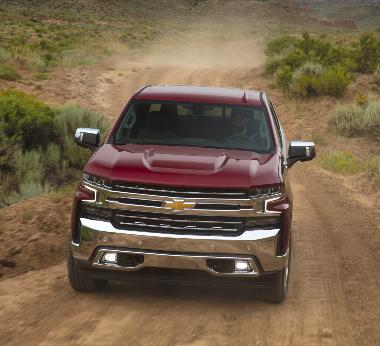
2020 Chevrolet Silverado: Six Engine Choices, Eight Trims, Power, Style and Substance
Tuesday, Jun 23, 2020
Chevrolet has been a leader on the American truck scene since 1918. Its signature truck badge is Silverado, which launched as a trim level for Chevrol …Chevrolet has been a leader on the American truck scene since 1918. Its signature truck badge is Silverado, which launched as a trim level for Chevrolet C/K pick-ups and Suburbans in 1975, before becoming its own line in 1999.Show More
A year after a full redesign, Silverado for 2020 receives a few minor changes and updates for the Light Duty (Silverado 1500), a complete redesign for the Silverado Heavy Duty (2500HD, 3500HD), and minor changes to the Silverado Medium Duty (Silverado 4500HD, 5500HD, 6500HD). I tested the Silverado 1500, which gains available trailering mirrors and cameras – up to eight available with 15 views, Bed View Camera (included with available Technology Package), available Adaptive Cruise Control, available 10-speed automatic transmission, new 3.0-liter turbodiesel engine available as an option, upgraded maximum towing capacity to 13,400 pounds and a bevy of cosmetic changes.
Silverado is packaged as a work truck, play truck and luxury truck with trim, engine, bed and cab size options for multiple needs and tastes. I’m talking about eight trims, six engines, and three cabs, so the muscular exterior is an overabundance of measurement possibilities.
Looking ruggedly handsome, my 2020 Silverado 1500 LTZ with a Crew Cab was outfitted with a short bed. The 5-foot-8-inch box, brought exterior measurements to 231.7 inches in length (the 6-foot-6-inch box adds 9.5 inches and the 8-foot box is not available with the Crew Cab). Silverado’s wide body is 81.2 inches wide and a tall 75.5 inches high (for the 4x4), and some trims are as much as 78.4 inches high. My test truck has a 147.4-inch wheelbase – some trims go 157.4. Ground clearance is 8.9 inches and step-in height measures 22.2 inches, while the Silverado LTZ’s base curb weight ranges from 4940 to 5090 with the 5.3-liter engine and 4x4 configuration that was set up on my truck.
Inside, Silverado’s well-appointed, comfortable, safety-focused and tech-filled interior is roomy, quiet and functional, with a sturdy cab structure. Its Crew Cab provides 43.0 inches of front headroom with 40.1 in the rear. Legroom is spacious, at 44.5 inches up front and 40.1 in the rear, while shoulder room measures 66.0 and 65.2 inches.
Silverado provides six power options: a 4.3-liter V-6 with a six-speed automatic transmission, 285hp and 305 lb-ft of torque, rated at 16mpg/city and 21mpg/highway; 5.3-liter V-8 and six-speed, 355hp and 383 lb-ft of torque 15/city, 21/highway; 2.7-liter Turbo and an eight-speed automatic, 310hp and 348 lb-ft of torque, 20/city, 23/highway; 5.3-liter V-8 and an eight-speed automatic or 10-speed automatic, 355hp and 383 lb-ft of torque 16/city and 22/highway; 6.2-liter V-8 and a 10-speed automatic, 420hp and 460 lb-ft of torque 16/city, 20/highway; and a 3.0-liter I-6 turbo-diesel with a 10-speed automatic, 277 hp and 460 lb-ft, and rated at 23 and 33mpg.
My Silverado LTZ with the 5.3 and eight-speed showed brawn and responsiveness. A big truck that feels smaller and more responsive behind the wheel, the set-up weaves in and out of traffic, accelerates powerfully, hauls big loads effortlessly, tracks well on the road and acquits itself well at the track, with a 6.7-second (hand-timed) zero-to-60mph sprint and a 15.2-second (hand-timed) quarter-mile. Silverado is a challenge to park due to size and blind spots, and the independent coil-over-shock front suspension with twin-tube shocks coupled with a solid axle rear with semi-elliptic, variable-rate two-stage multileaf springs and splayed twin-tube shocks bump a bit on road irregularities, but the cabin is quiet and the feel is confident.
Fuel estimates of 16mpg/city and 22mpg/hwy with my AWD set-up were in-line with my mixed-use test average of 20.1mpg.
There are 2020 Silverado 1500s for myriad tastes. Silverado is offered in eight trims; Regular Cab with standard box and long box; Double Cab Standard Box and Crew Cab in short box and standard box; and is configured in 2WD and 4WD. And there are six engine-transmission options. Base prices run from $30,095 with 2WD, Regular Cab and Long Bed to $36,395 for Crew Cab, 2WD and Standard Bed, and can start as high as $60,890 for the High Country trim with 2WD and 3.0-liter turbo engine. My test 2020 Silverado LTZ, seventh of the eight trims, in 4WD with the 5.3-liter engine and 8-speed transmission, started at $49,000.
My LTZ trim package came with 4WD, chrome grille, 18-inch Bright Silver painted aluminum wheels, advance trailering features, perforated leather seating, and lots of standard trim items. Cajun Red Tintcoat exterior paint added $495 and was matched to a Jet Black perforated leather interior. My test truck added the LTZ Premium package, discounted to $5700, for power sliding rear window with rear defogger, front buckets, power sunroof front center console, polished 20-inch wheels, 275/60R20 all-season, blackwall tires and more. The Technology Package added $2125 for a rear camera mirror, 8-inch diagonal digital driver information center, HD Surround Vision and head-Up display. Six-inch black rectangular wheel-to-wheel assist steps added $850. Destination and Freight charges of $1575 put the sticker at $60,765, but there are total cash allowance discounts of up to $5500, available, and my test truck came to $54,265, so check with your local dealer about incentives.
You can see 102 years of Chevrolet trucks, and 109 years of the Chevy brand as well as a diverse assortment of GM vehicles, at the Carlisle Chevrolet Nationals at Carlisle (PA) Fairgrounds, June 26-27. Home to a diverse group of General Motors vehicles, from vintage trucks and muscle cars, to the modern 6th-Generation Camaro, this event was formerly known as the GM Nationals. The weekend isn’t limited to “Bow-Tie” branded cars and trucks and includes all things GM, including a display honoring GMs of the 1970s, 50 Years of Monte Carlo, 50 Years of the Chevelle LS6 454, the annual Novas at Carlisle show, and vehicles old and new.
> Visit www.CarlisleEvents.com for more on the automotive hobby.
Mike Blake, former editor of KIT CAR magazine, joined Carlisle Events as senior automotive journalist in 2004. He's been a "car guy" since the 1960s and has been writing professionally for about 30 years. </I>
-
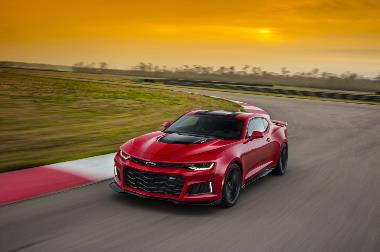
2020 Chevrolet Camaro ZL1: With 650-hp, This Sporty ‘Pony’ is a Beast
Tuesday, Jun 16, 2020
The Chevrolet Camaro was launched for model year 1967 to compete with Ford’s Mustang, and the “Pony Wars” had begun, and four generations of Camaro we …The Chevrolet Camaro was launched for model year 1967 to compete with Ford’s Mustang, and the “Pony Wars” had begun, and four generations of Camaro were produced before production ended in 2002. Chevy chose “Camaro” for this Pony icon’s name, and while Camaro has no English derivative, GM marketers said, “the name suggests the comradeship of good friends as a personal car should be to its owner." When asked, "What is a Camaro?" the response was "a small, vicious animal that eats Mustangs.”Show More
Reintroduced in 2009, with Gen-5, the current 6th-generation of Camaro came to life in 2015 for the 2016 model year. It has undergone a few cosmetic changes each year since, with new front fascias and grillework on several trims, moving the “Bowtie” logo to the upper grille opening, and an evolving rear fascia with sculpted LED taillamps.
Available in seven trims, one distinct, almost stand-alone version is the top-of-the line ZL1 I tested. ZL1 is Camaro’s most powerful configuration, outfitted with the same 6.2-liter 650-hp engine that powers up the Corvette ZO6. While changes for the lower-hp Camaros -- 2.0-liter 275-hp turbo, 3.6-liter 335-hp V-6 and 6.2-liter 455-hp engine choices – include a redesigned front fascia for the SS trim, a modified version of a 10-speed automatic engine now available in the V-6, some small features swapped, and the addition of the LT1 model, only two minor changes affect the ZL1. A sharp-looking Rally Green Metallic exterior paint is available (to top a palette of 10 colors) and you can get red kneepads. Other than that, the ZL1 is so packed with features that it needs very little extra, and my test ride pretty much stood pat with its standard accouterments.
Among the standard enhancements are a Chevrolet Infotainment system with 8-inch color touchscreen and available navigation; a full-display rear camera mirror with improved, high-definition view quality; Forward Collision Alert; upscale ambient lighting; wireless charging feature and Performance Data Recorder.
The ZL1 treatment sets itself apart from other Camaros with forged 20-inch alloy wheels, sticky Goodyear Eagle F1 Supercar tires, heated exterior mirrors, LED daytime running lamps, and a special ZL1 rear spoiler. ZL1 aerodynamic upgrades include huge air intakes and wind deflectors, while available performance packages add downforce and track hotness.
From its black carbon fiber weave hood insert to its rear air wing, the Camaro ZL1 is muscular, aggressive, sporty and head turning. The huge black undergrille, and slender overgrille with “Bowtie” badge charge ahead with a low and wide road-hugging stance, augmented by bold cooling ducts, ground effects wings and sculpted character lines.
The ZL1 Camaro is a muscle-car beast, measuring 190.2 inches long, 74.7 wide and 52.4 inches high, on a 110.7-inch wheelbase. My test manual (stick) Coupe weighed in at 3883 lbs. (curb weight).
Camaro is muscular and worth getting behind the wheel just because it looks so good, but with ZL1, you also get 650 horses and 650 lb-ft of torque from its standard 6.2-liter LT4 direct-injected V-8 engine. With jetlike response and growl, ZL1 has Corvette-like acceleration and stay-power. On the track, my test Coupe finished off a zero-to-60mph sprint in 3.5 seconds (hand-timed) during a quarter-mile run of 11.5 seconds.
A street-legal track star, Camaro ZL1 uses ZF rack-mounted electric, power-assisted and variable ratio rack-and-pinion steering to shred an autocross, and the MacPherson-type front struts with dual lower ball joints, twin-tube struts and direct-acting stabilizer bar worked in concert with an Independent five-link rear to supply a driver’s feel and passenger smoothness over the road.
The ZL1 Coupe cockpit was cozy and packed with infotainment, keyless access with push-button start, cruise control, power trunk release, manual rake and telescopic steering wheel, suede-wrapped flat-bottom steering wheel and shift knob, Red seat belts, and all the necessary connectivity and tech.
Coupes tend to be glovelike and ZL1 conformed with good legroom and shoulder-hunched headroom. You get 36.6 inches of front headroom and legroom of 42.7 inches. Rear accommodations are a snug 33.5 inches of headroom with only 29.9 inches of child-worthy legroom. Shoulder room is accommodating at 55.5 inches in row one and 54.5 behind.
Available in seven trim levels in both Coupe and Convertible configurations, the 2020 Camaro base prices in Coupe form start with the LS at $25,995 manual with a smaller 2.0-liter turbo engine and move all the way up past the LT1 at $34,995 and the 1SS at $38,495, to the top trim ZL1 -- $63,995. A Paddle shift automatic transmission adds about $1595 and Convertibles add about $6500.
I prefer a stick shift for my sports cars, and my 6-speed manual hardtop was eye-catching in Red Hot, though I would have liked the new Rally Green Metallic paint. A Black Metallic center stripe on the roof added $470. The interior was Jet Black with Red accents and seat trim and most other enhancements were excluded for my test ride. With Destination and Freight charges of $995, and a Gas Guzzler Tax of $1700, my 2020 Camaro ZL1 Coupe/1LE was priced-as-tested at $66,165, but some cash allowance incentives could bring that down by $1500, so check with your local dealer.
Camaro aficionados can see 53 years of Camaro, and a thousand other Chevrolet and GM vehicles, at the Carlisle Chevrolet Nationals at Carlisle (PA) Fairgrounds, June 26-27. Home to a diverse group of General Motors vehicles, from vintage muscle to the modern 6th-Generation Camaro, this event was formerly known as the GM Nationals. While focusing on 109 years of the Chevy brand, the weekend isn’t limited to “Bow-Tie” branded cars and trucks and includes all things GM, including a display honoring GMs of the 1970s, 50 Years of Monte Carlo, 50 Years of the Chevelle LS6 454, the annual Novas at Carlisle show, and vehicles old and new. But for Camaro enthusiasts, be sure to check out the 2020 Camaro ZL1.
<I> Visit www.CarlisleEvents.com for more on the automotive hobby.
Mike Blake, former editor of KIT CAR magazine, joined Carlisle Events as senior automotive journalist in 2004. He's been a "car guy" since the 1960s and has been writing professionally for about 30 years. </I>
Book with a preferred Hotel

Book online or call (800) 216-1876
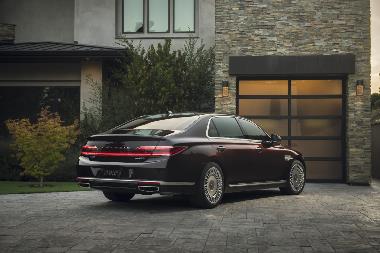
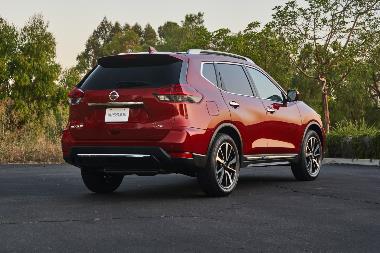
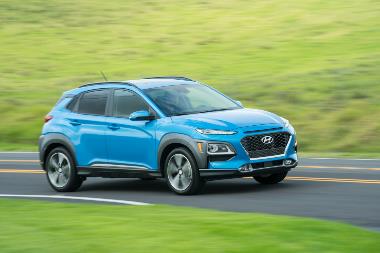
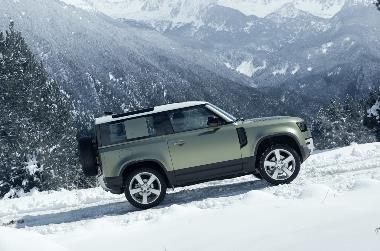
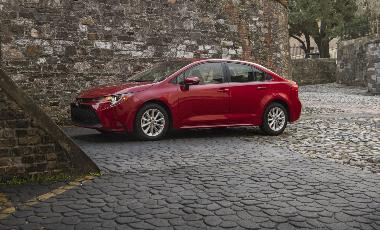
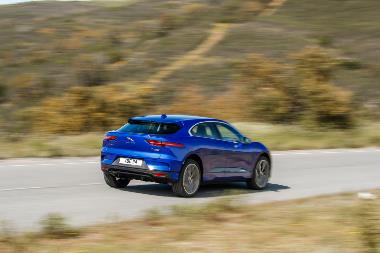
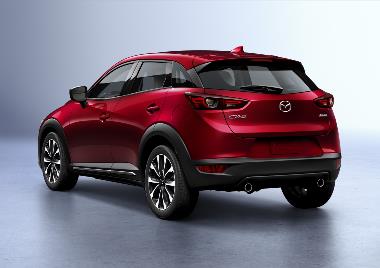
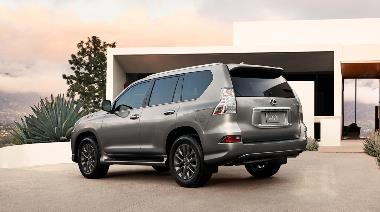
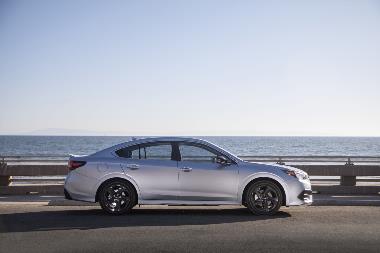
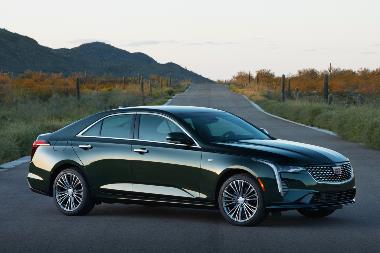
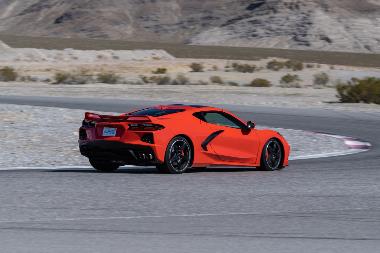
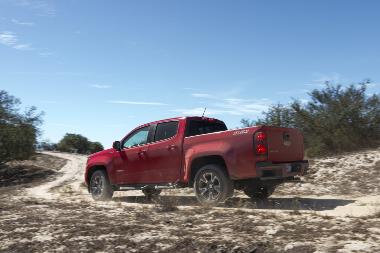
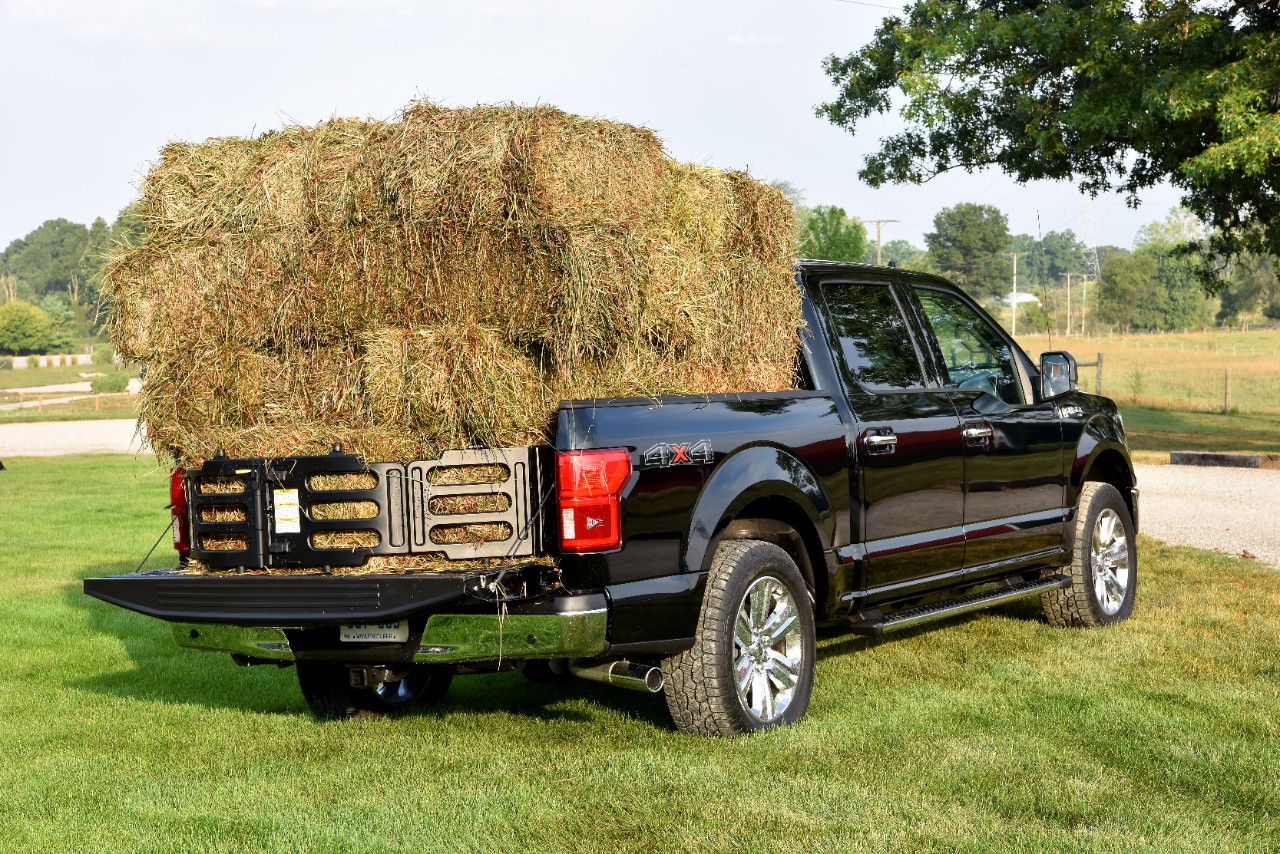
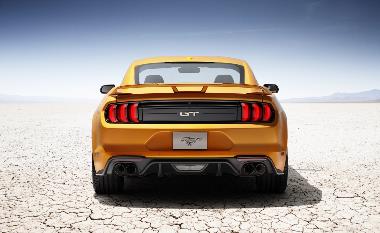
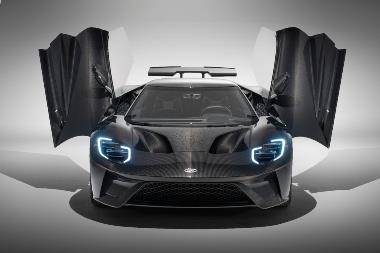
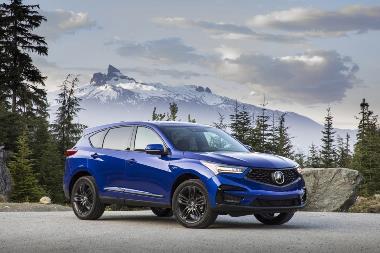
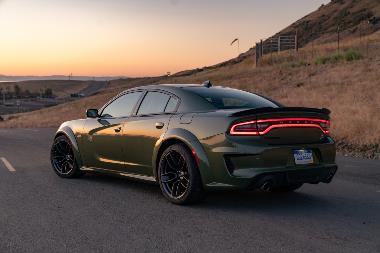
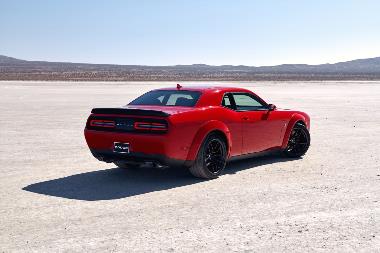
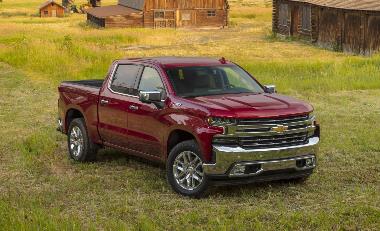
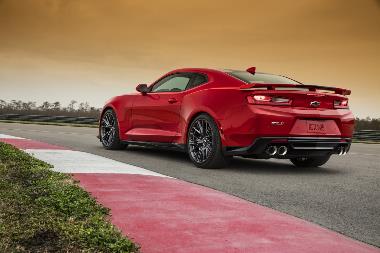



.png?sfvrsn=8cce4cd8_2)



